Feed aggregator
Business Musings: Doing The Work Amid The Noise
Please note: This originally went live on my Patreon page on Sunday night, February 9, 2025. If you want to see most of my business posts these days, you’ll find them on Patreon. I’m only going to post a handful here.
Doing The Work Amid The NoiseThere are times in life when being a writer is hard. I don’t mean real-world hard. Real-world hard is when your job is so important that one small error means someone else dies. There are a lot of real-world hard jobs in the world, and they keep the rest of us safe and alive.
As I said in a post a few weeks back, entertainment is important as well. We have an obligation to help those who are doing real-world hard jobs by giving them some kind of respite at the end of their long days.
But that means we have to do the work, and the work comes out of our brains. When we’re panicked and distracted—checking the news every fifteen minutes, looking at our social media, worrying aloud with our friends about what is going to happen next—it’s difficult, if not near impossible to concentrate on our made-up worlds.
They feel so small and unimportant.
We don’t see readers enjoying our work. We have no idea that a reader will close a book and hug it, like I did a week ago when I finished Robert Crais’s latest, The Big Empty. I know that Bob is a slow writer, and I wish he wasn’t, because I would love another of his books right now.
He lives in L.A. Not only are people there dealing with the chaos that is America right now, they’re dealing with the devastating losses of many parts of their community. I suspect he’s distracted.
I know that Connie Willis is because I’m following her Facebook page in which she aggregates all the news of the day. I have no idea how she finds the time to write fiction or if she even is. I hope she is.
I’m a former journalist. I love information, the more the better. But, after the election, I shut off all media. I canceled all of my major newspaper subscriptions, stopped watching everything but the weather on any news channel, and got a lot done. I needed to because of an ongoing business crisis.
But I also needed the rest.
And I knew if I didn’t figure out how to control the information that came to me, I would not write another sentence—at least in fiction.
Writing fiction, as unglamorous as it sounds, is my job. It’s what I do for a living. But it’s also what I would do if the world ended tomorrow (which has gotten closer, according to the Doomsday Clock run by The Bulletin of the Atomic Scientists).
I make up stories. I always have. I write them down and have done that since I was in grade school.
Storytelling keeps me sane.
After the despair of the election (not shock, because I kept saying all summer [hell, all year] that this was possible, even if I wasn’t really listening to myself), I needed that quiet. I needed to accept that the world as I had known it for years would change dramatically.
How dramatically? I had—and have—no idea. This post is not about what’s going on out there in the real world. It’s changing too fast. I sat down at 1 p.m. on a Sunday, knowing that by the time I finish, more news will pour in.
It might be good; it might be bad; it might be hopeful; it might be devastating. It might be all those things at once.
It’s too much for the brain to cope with—and right now, it’s designed that way. Which is why I urge you to take care of yourself and your family first. Then take care of your community, whatever that might be, and then pick one or two or three issues to work on and be part of the solution for. If all of us do that, our differences will make sure that we will cover the entire spectrum of problems that are popping up like weeds.
Yes, I know. People are dying. I know. The situation is growing more dire by the day.
One step at a time. That’s all we can do. See above.
The problem is, then, how to corral the brain and give it enough space so that you can write.
That solution is different for each and every one of us. And it’s different each one of us as an individual at different points in our lives.
I can only give you examples from my own life.
Example #1: I got very sick when I was living on the Oregon Coast. I’m already allergic to half the world; there, we later discovered, I was living in mold and was allergic to that too. We moved to the dry desert here in Nevada just in time. I doubt I would have made it through the year otherwise.
But, I was and am a writer. I wrote through all of that, and even wrote a book about my methods for writing when I barely had enough strength to get out of bed. The book is called Writing With Chronic Illness.
Some of the solutions in that book might work for some of you now. Doing the writing first, being happy with what you can accomplish, accepting your limits—all of those are important.
I did them as best I could there. Here, in Las Vegas, I’m healthier, although the chronic conditions do fell me more than I would like. I can get through them easier in this dry climate, so sometimes I forget what I had learned.
Example #2: Our close friend Bill Trojan died, and Dean had to handle Bill’s horribly messy estate. At the same time, my editor at one of the traditional publishing houses had a mental meltdown and spent a half an hour on the phone, screaming at me and telling me I was the worst writer on the planet.
No one treats me like that. No one. So I immediately divorced that publisher, offering to pay back the money they had invested in me and my work so that I could get the rights to my books back.
That was at least $250,000 that I would pay—even though we were embroiled in the estate mess and Dean was not working on publishing and writing, due to that big problem.
My confidence was shaken, and we were in financial difficulties. I had to figure out how to write a funny novel that was still under contract.
I did, a page here and a page there. I remember sitting in my office and writing long paragraphs about how awful that editor was to get her out of my head so that I could actually finish a book that was under contract for someone else.
I did it, but shutting out the noise was almost impossible. It took concentration. It took will power. It took a daily reminder to myself that writing is supposed to be fun.
And you know what? Many days, it ended up being that way, just because of the determination.
Example #3: As many of you know, the last two or so years of my life have been filled with turmoil. Dean lost much of his eyesight, which meant we had to make some massive changes in our lives. Then, just as he was getting used to the changes, he fell on a 5K race and destroyed his right shoulder.
He couldn’t do much work. He was healing. I cared for him and, as I dug deeper into the business at our publishing company, I realized it was sick too.
We had to make drastic changes there, and I had to take over the company completely.
Which meant it got run the Kris way—lots of questions, lots of systems, lots of data, lots of procedures. The old staff buckled under the Kris method (which had not been in place since I got very ill in 2015), and within 2 months, they were gone…leaving problems so massive behind that those problems either had to be solved or the company had to be dissolved.
Dean and I chose solving those problems, and we had (and have) great help in doing so. These sorts of events teach you who your friends really are.
I knew, as we dug in, that I was not going to be focused on the writing. I needed to figure out how to harness that focus in a different way.
I had a novel to finish as well as short story deadlines from traditional short fiction editors. I was not going to miss those deadlines, and I needed to finish that novel.
The problem was that in this small condo, I did not have a second business office. I had to do the work on my laptop and my writing computer in my writing office.
I knew I needed help.
So I set up a challenge with other writers. I made it costly for me to lose (not just pride—which, pardon my French, fuck if I care about personal pride). I started the first challenge in December of 2023, and continued the challenges through most of 2024.
I lost a couple of times. But the challenge was the only thing that got me to the computer. Daily word count…that I had to report (and God, I hate reporting). I couldn’t fudge it for my own sake, and I didn’t.
I finished that novel, and a lot of short fiction, before September hit, and the business stuff combined with some legal matters that were all do-not-miss and I had to miss some writing days.
It irked me—and kept the writing as a focus.
Usually I don’t bring others into my writing process, but I knew I would need it in 2024. So I did it.
I still have a writing challenge going, this one for short stories, because I know that now, I need to get back to massive novel production, and I didn’t want to lose my short story focus. I have to do both (which I have done throughout my career).
It’s not as draconian as the 2024 challenge, but my life is different now. The business has settled into a pattern. We’ve moved the main offices to Nevada, which means I have a business desk. (Yay!) And we’ve gotten through some of the mess left by the old staff, and what’s left we’re slowly wrapping our arms around.
One thing I noticed, though, in all of those crises, is that the world swirled around me, with its problems and its demands. In each of them, it felt like a massive storm pounding on the outside of my house—you know the kind: the rain is horizontal, the winds are devastating, and the view outside the windows is black and gray, with almost no visibility at all.
You just have to wait out those storms and know that when they’re over, everything will be different, but some things will still stand. There will be rebuilding. There will be heartbreak. But the sun will have come out to reveal what’s left.
In the middle of it, though, you just have to survive it and keep the important things safe.
Your writing is one of those important things. It will take effort to keep it safe. Effort on your part.
And you’ll have to figure out what it will take for you to do it. My methods might not work for you. Find what works. Realize that those things might not work in a different kind of crisis.
But you can find a way to be with yourself during these tough times.
Here are a few practical things you can do in most (not all) crises:
- Protect your safe space. For me, that’s my writing space. I couldn’t do it during this last crisis, but I managed somehow. It felt uncomfortable and reminded me yet again about the importance of having a dedicated writing computer.
- Shut off the internet. Dean uses a different computer for his internet research—one that’s just a foot or two away from his writing computer. I shut off my wi-fi, so that clicking over to the internet for research takes a conscious action, and often makes me realize that I was just heading over to distract myself. (Different strokes, y’know.)
- Set a daily writing time. Make sure your family knows what it is, and that you shouldn’t be disturbed. Try to pick a time when it’s not easy to disturb you (early mornings; late evenings)
There are so many other practical things you can do, but again, they become specific to you.
One other thing—a tough thing—is that sometimes the project you were working on when the crisis hit is not the project your creative voice needs right now. You might have to switch—something shorter, something longer, something that requires less research, something that requires a different kind of concentration.
It’s up to you.
But the key here is to remember that when you write, you’re inside and safe from the storm. It will rage around you unabated while you’re working. It’ll probably (sadly) still be there when you’re done with today’s writing session.
But you got that session done. It’s a victory.
Celebrate the tiny victories. Keep writing.
And remember, in almost every difficult time, the only way out is through.
“Doing The Work Amid The Noise ,” copyright © 2025 by Kristine Kathryn Rusch.
Promo video for the new Polish translation of Stinger
Here’s a promo video for Vesper’s Polish translation of Stinger that was posted by mroczne_strony!
https://www.robertmccammon.com/wordpress/wp-content/uploads/2025/02/mroczne_strony_602a2ada705b4af4bbbc4044882c789e.mp4Busy, busy

House Andrews are deep in the editing cave for Maggie. How deep? They shared an update yesterday on Facebook:
A lot of work, but of course what we take from it is a very chalant OMG OMG OVER EIGHT HUNDRED PAGEEEEES! WE SHALL DEVOUR!
No? Just me? Hehe.
But that takes a lot of effort. I am their herald today, conveying their apologies that they will not have time for a Wednesday post.
Instead, I’d like to ask you something I’ve been curious about: what do you do in your every day life to add a bit of whimsy to it?
This was a post a while ago on TikTok and I’ve had the most lighthearted few moments reading the comments. For example, someone shared that they meow songs to their cats “so they can hear the lyrics in their own language“. Others that they “put on pyjama sets the night of fresh sheets, so they can have ‘fancy sleep’” or “when it’s time to wash the dishes, I tell them it’s bath time“.
I realised I’ve been doing this since I was a child: whenever there’s a storm out, I fling out my hands (dramatically, of course) and call out “WINDS!” and when the wind intensifies, I feel like a powerful witch. Nowadays, I also look expectantly at Mr Mod R until he acts impressed with my magical powers.
So, what are the small things you do that are perhaps silly, but bring you a bit of joy in a world where it’s increasingly hard to find some?
The post Busy, busy first appeared on ILONA ANDREWS.
New Edge Sword & Sorcery Magazine – New Jirel of Joiry!
In 2023, New Edge Sword and Sorcery Magazine (NESS) emerged, and it continues to deliver outstanding magazines, renewing past classics while showcasing contemporary and veteran authors. Notably, issues 1 and 4 include Elric tales by Michael Moorcock. Black Gate featured the crowdfunding and reviewed the initial volumes, and published an interview with editor Oliver Brackenbury (links).
A new crowdfunding campaign to bring issues 5-7 to life is live on Backerkit through March 15th. NESS continues to bring us Jirel of Joiry stories! We’ll highlight Jirel of Joiry here but the magazine offers much more.
Read this to learn the trajectory of Jirel of Joiry and NESS! Jirel is alive and well!
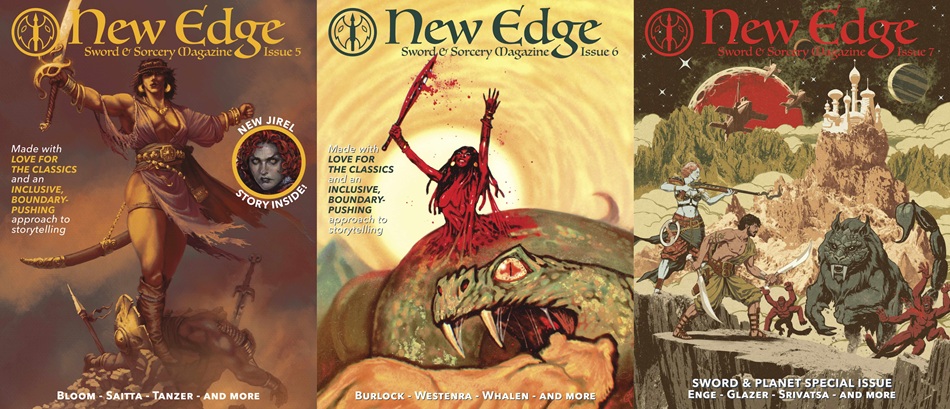 Press Release – NEW EDGE SWORD & SORCERY Backerkit crowdfunding for Issues 5-7:
Press Release – NEW EDGE SWORD & SORCERY Backerkit crowdfunding for Issues 5-7:
Building on their success in 2024, a Backerkit campaign has been launched for new issues.
TORONTO, Ontario, February 13th — Begun in Fall 2022 with issue #0, short story & non-fiction magazine New Edge Sword & Sorcery is running a crowdfunding campaign on Backerkit to produce issues #5, 6, and 7 in accessible digital, classic softcover, and luxurious hardcover (w/endpage art and a bookmark ribbon!) formats. These will be released in November of 2025.
Backing this campaign is a way to be a part of genre history: JIREL OF JOIRY will be returning with her second new story since the originals in Weird Tales! Jirel was the first Sword & Sorcery heroine, created by legendary Weird Tales regular, C.L. Moore. Like Alice in Wonderland with a big f***ing sword, Jirel had compelling adventures in bizarre dream-logic realms, balancing a rich emotional life with terrifying struggles against dark forces! Predating Red Sonja, she & Moore were a direct influence on Robert E. Howard’s writing, as well as so many who came after.
Alas, Moore only wrote a handful of Jirel tales — which are still collected, published, and read to this day. So it’s a good thing that when backers of the campaign helped it hit 100% funding in just four days, they helped make sure a new story will be published! Authorized by the estate of C.L. Moore, “Jirel Meets Death” has been written by the magnificent MOLLY TANZER (editor of Swords v. Cthulhu, author of Creatures of Charm and Hunger, and so much more).
Expanding to three issues a year also allows for the first ever special issue! NESS #7 is dedicated to S&S’ older, science-fantasy cousin Sword & Planet – featuring new S&P tales and non-fiction. Twenty-six other authors are spread across the three new issues this campaign is funding, including names like Alec “Black Beth” Worley, Premee Mohamed, and Dariel R.A. Quiogue.E
very story and non-fiction piece in the issues will be paired with two original B&W illustrations as soon as the crowdfund meets its first stretch goal – Double Art. The goal after that is a fund to cover shipping discounts for backers outside the United States, and from there every stretch goal is a pay raise for contributors. These goals make clear the magazine’s values of paying creators as much as they can, and making NESS financially accessible.
The magazine’s editor, Oliver Brackenbury, promises the magazine is “Made with love for the classics and an inclusive, boundary-pushing approach to storytelling”, delivering high quality writing and art in a wide variety of styles. Sword & Sorcery can be many things and still be Sword & Sorcery…or Sword & Planet!
Readers should race to back the magazine’s new issues before the campaign ends on March 15th, so they can benefit from crowdfund exclusives like bonus stories, discounted back issues, and cover art postcards. They can even win free, unique softcover issues annotated with behind-the-scenes info by chatting about S&S in the crowdfund’s community tab!
With the NESS pastiche continuing the heroine’s saga, here are the Jirel stories- “Black God’s Kiss” (C.L. Moore October 1934)
- “Black God’s Shadow” (C.L. Moore December 1934)
- “Jirel Meets Magic” (C.L. Moore July 1935)
- “The Dark Land” (C.L. Moore January 1936)
- “Quest of the Starstone” (C.L. Moore with Henry Kuttner November 1937)
- “Hellsgarde” (C.L. Moore April 1939)
- “Jirel and the Mirror of Truth” (Molly Tanzer 2024)
- “Jirel Meets Death” (Molly Tanzer 2025)
Ryan Harvey authored two Black Gate posts in 2007, one covering the author’s life and contributions in detail (Jirel ofJoiry: The Mother of Us All) and another reviewing Black God’s Kiss, Planet Stories‘s collection of all of C.L. Moore’s Jirel stories (including a collaboration with husband Henry Kuttner).
The red-haired, yellow-eyed, and lioness-fierce sword-wielding Jirel has an unassailable place in contemporary popular culture, along with her genre cousins, the laser-gun wielding heroine and the wooden-stake-armed heroine. Fantasy, science fiction, and horror no longer have “Males Only” signs over their doors, either for their warriors or writers. So many female authors and protagonists thrive in speculative fiction today that it seems hard to imagine a time when the opposite was the case. It feels impossible to visualize fantasy before Catherine Lucille Moore broke down the gender barriers (even if she did partially disguise her sex behind her first initials, C. L.) and brought with her Jirel. Beautiful, fierce, loyal, defiant, passionate Jirel did more than raise her sword against sorcery. She slashed through the confining walls around speculative fiction and let it reach toward the horizons in a way it never could have before her advent. That achievement alone assures Jirel and her creator a place in the firmament of the stars of fantasy literature.
— Ryan Harvey, Jirel ofJoiry: The Mother of Us All
 Saprophial interior art, NESS #3, Jirel
Author, Artist, and RPG!
Saprophial interior art, NESS #3, Jirel
Author, Artist, and RPG!
If you’re interested in learning more about Molly Tanzer and her approach to writing Jirel, check out the article Old Sorcery, New Edge: Q&A with Molly Tanzer (by Alec Worley, Feb 2024) and the Return of Jirel Interview hosted by Oliver Brackenbury, editor of NESS (2024).
NESS Magazine is always saturated with interior art. Artist Saprophial illustrated four pieces “Jirel and the Mirror of Truth”. The artist was a perfect choice since she also created the art for the 2022 Black God’s Kiss RPG Aventure and Game (check out Blazing Worlds website for more info.)
Back New Edge S&S Issues 5-7 Now! (link)
S.E. Lindberg is a Managing Editor at Black Gate, regularly reviewing books and interviewing authors on the topic of “Beauty & Art in Weird-Fantasy Fiction.” He is also the lead moderator of the Goodreads Sword & Sorcery Group and an intern for Tales from the Magician’s Skull magazine. As for crafting stories, he has contributed eight entries across Perseid Press’s Heroes in Hell and Heroika series, and has an entry in Weirdbook Annual #3: Zombies. He independently publishes novels under the banner Dyscrasia Fiction; short stories of Dyscrasia Fiction have appeared in Whetstone, Swords & Sorcery online magazine, Rogues In the House Podcast’s A Book of Blades Vol I and Vol II, DMR’s Terra Incognita, and the 9th issue of Tales From the Magician’s Skull.
7 Author Shoutouts | Authors We Love To Recommend
Here are 7 Author Shoutouts for this week. Find your favorite author or discover an…
The post 7 Author Shoutouts | Authors We Love To Recommend appeared first on LitStack.
SPFBO Finalist Review: The Forest at The Heart of Her Mage by Hiyodori

ABOUT THE AUTHOR: Hiyodori is not a bird. But she is dearly fond of her namesake, a plain-looking brown-gray bird that likes to perch near her Tokyo apartment and unleash the most incredible primal screams. Hiyodori (the human author) loves stories with fantastical settings and complicated, difficult-to-define relationships. All of her books—including Carrion Saints, her latest standalone novel—take place in the same shared fantasy universe.
The Forest at The Heart of Her Mage links: Amazon, Goodreads
ESMAY
One part dark fantasy quest, one part unconventional f/f romance, one part grief/trauma healing journey, The Forest at the Heart of Her Mage is an exceptionally imaginative and reflective quest adventure that takes the concept of slow-burn storytelling to the next level.
For me, The Forest at the Heart of her Mage started off extremely strong, and it immediately hooked me with its intriguing plot, world and romance set-up. I mean, when you promise me a sapphic opposites-attract marriage of convenience, a quest into a dangerous dark magical forest, and lots and lots of emotional turmoil and trauma… I am IN. And for the most part, Hiyodori totally delivers on all this great potential, albeit not in the way that I was totally expecting or hoping for.
See, on the one hand I found Hiyodori’s wild imagination and refreshingly unconventional storytelling to be extremely impressive and enjoyable. The steampunkish scifantasy world building was so cool to me (even if some aspects felt a bit shallow at times), especially in combination/contrast with the more traditional and almost dark fairytale-esque qualities of the world and story. Particularly the whole concept of mages needing maintenance on their magic cores to prevent them from going berserk stood out to me, not least because I very much like the idea that an operator could maybe swoop in to untangle my mess and fix my physical and mental state up a bit; wouldn’t that be the dream?
Yet on the other hand, I had a really hard time connecting to these characters, and I soon found myself struggling to stay engaged in their quest. There was a certain ‘je ne sais quoi’ missing from Tiller’s narration of this tale for me, and her tendency to lapse into (rather repetitive) introspective reflections of her traumatic past unfortunately hindered the pacing quite a bit for me. And although these characters are quite emotionally complex, I personally felt like they didn’t have personality outside of their trauma and some exaggerated quirks, which made it hard for me to get invested in them.
Moreover, I think marketing this book as a slow-burn sapphic fantasy romance adventure maybe does it a bit of a disservice, since I personally think it shines much more as a nuanced exploration of grief, identity, family, and childhood/generational trauma. Yes, the complicated yet inexplicably fun dynamic between Tiller and Carnelian lies at the heart of this story; and yes, I am always here for romances that rely more on emotional connection rather than physical/sexual attraction. However, I personally didn’t feel any kind of chemistry between them until maybe the last 5% of the book (and even then it was mostly based on guilt and trauma bonding?), and I think that their dynamic shines more as friends than as lovers.
For me, the time spent in the deliciously dark Devouring Forest was easily the strongest part of the novel, closely followed by the long and beautifully satisfying sequence of falling action at the end. So while The Forest at the Heart was maybe a bit of a drawn-out and bumpy ride for me personally, I think Hiyodori ended this unique adventure on a really high note, and it’s more than worth giving a shot if you go in with the right expectations.
ŁUKASZ
Magical forests are nothing new in fantasy, but the one in The Forest at the Heart of Her Mage isn’t a typical enchanted glen with sparkling streams and the occasional talking tree. No, this forest is alive, hostile, and more than a little creepy. Tiller, our protagonist, is voluntarily walking right back into it after two decades of carefully avoiding the place. Brave? Sure. Questionable life choices? Absolutely.
But she’s not going alone. Carnelian, a mage with a bad reputation and a knack for making things complicated, accompanies her. Together, they deal with monsters, mysteries, and politics. There’s also a slow-burn romance with more tension than action.
Let’s start with the good stuff: this is a beautifully layered book. The magical system, split between regimented human magic and the wild, unknowable magic of the forest, is well-thought-out and intriguing. The forest itself feels like a character - alive, unpredictable, and unsettling. And then, the budding relationship between Tiller and Carnelian is as much about peeling back emotional layers as it is about fending off literal monsters, and their dynamic is a highlight. If you like your romance slow-burn with a healthy dose of secrets and snark, this delivers.
But - and there’s always a but - the pacing could be tighter. The story leans into introspection and atmosphere, which is great when it’s working, but occasionally makes the story feel like it’s wading through mud. Tiller and Carnelian spend a lot of time trekking through the wilderness and working through their issues, which is interesting in parts but sluggish in others. The action scenes, while sharp, are scarce, and the overall pace is steady.
Still, the payoff is, I think, worth the time. If you’re in the mood for a book that’s eerie, emotional, and a little meandering, The Forest at the Heart of Her Mage is precisely this.
OFFICIAL SPFBO SCORE

The Spellshop - Book Review
 The Spellshopby Sarah Beth Durst
The Spellshopby Sarah Beth DurstWhat is it about:The Spellshop is Sarah Beth Durst’s romantasy debut–a lush cottagecore tale full of stolen spellbooks, unexpected friendships, sweet jams, and even sweeter love.
Kiela has always had trouble dealing with people. Thankfully, as a librarian at the Great Library of Alyssium, she and her assistant, Caz—a magically sentient spider plant—have spent the last decade sequestered among the empire’s most precious spellbooks, preserving their magic for the city’s elite.
When a revolution begins and the library goes up in flames, she and Caz flee with all the spellbooks they can carry and head to a remote island Kiela never thought she’d see again: her childhood home. Taking refuge there, Kiela discovers, much to her dismay, a nosy—and very handsome—neighbor who can’t take a hint and keeps showing up day after day to make sure she’s fed and to help fix up her new home.
In need of income, Kiela identifies something that even the bakery in town doesn’t have: jam. With the help of an old recipe book her parents left her and a bit of illegal magic, her cottage garden is soon covered in ripe berries.
But magic can do more than make life a little sweeter, so Kiela risks the consequences of using unsanctioned spells and opens the island’s first-ever and much needed secret spellshop.
What did I think of it:When Jeffe told me I should read this book, I was easily convinced as I absolutely love Sarah Beth Durst's The Queen of Blood (I'm so going to get my trotters on the new paperback once it releases, because: have you seen that new cover!).
And this book is so going on my keeper shelves and will be hugged, treasured, and reread!
What a beautiful, touching read. If you need a cozy Fantasy read: look no further and get your hands on The Spellshop!
I loved Kiela from the start, and don't get me started on Caz, because I'll be singing his praises for hours. I mean: an intelligent, talking, sarcastic spider plant!!
The story is so sweet, and I kept reading to see what happens next for Kiela and Caz. There's some danger to keep you on edge, but mainly this book was delightful and full of whimsy. It made me smile while reading.
So you bet I jumped on the chance to read an Advance Reader Copy of the next book set in the same world as The Spellshop.
Why should you read it:It's a beautiful, cozy, and heartwarming Fantasy read.
SPFBO Finalist Interview - Hiyodori, the Author of The Forest at The Heart of Her Mage

ABOUT THE AUTHOR: Hiyodori is not a bird. But she is dearly fond of her namesake, a plain-looking brown-gray bird that likes to perch near her Tokyo apartment and unleash the most incredible primal screams. Hiyodori (the human author) loves stories with fantastical settings and complicated, difficult-to-define relationships. All of her books—including Carrion Saints, her latest standalone novel—take place in the same shared fantasy universe.
The Forest at The Heart of Her Mage links: Amazon, Goodreads
Thank you for agreeing to this interview. Before we start, tell us a little about yourself.
Thanks for having me! I’ve just emerged from a month spent obsessively playing the latest game in the Trails series (epic story-heavy RPGs from a company called Nihon Falcom). I'm still reeling! In a good way, that is.
I’ve been based in Tokyo for a while now, and I love it here, but I pretty much live the opposite of a bustling city life. Some areas are actually very quiet, with plenty of greenery and few high-rise buildings. Each Tokyo neighborhood (usually centered around the nearest train station) feels like a town unto itself. There’s a place for every type of personality.
Do you have a day job? If so, what is it?
Yes—one that uses a totally different part of my brain, so it feels like a refreshing break from writing (and vice versa). Loosely speaking, my role has elements of marketing, business strategy, and project management. So I get to do a lot of planning and light number crunching.
Who are some of your favorite writers, and why is their work important to you?
I really admire Megan Whalen Turner. Every single book in her Queen’s Thief series is a gem of elegant writing, tight plotting, and subtle characterization. She’s unbelievably good at evoking powerful emotions through implication, with understated language. I first encountered her work decades ago, and I love it just as much today. The Queen’s Thief series also happens to contain one of my favorite romantic arcs in any storytelling medium—which, for those familiar with the details, probably tells you a lot about my taste in romance.
I also have a soft spot for Haruki Murakami because (many years ago) his novels were among the first books that I read from start to finish in Japanese.
What do you like most about the act of writing?
Not to turn this question around on you, but there’s really only one aspect of writing that I strongly dislike. Everything else—planning, drafting, line editing, working through story-related roadblocks, and so on—is fun and rewarding in its own time and its own way. I don’t think I could pick a favorite phase of the process.
The one part of it that I find downright grueling comes right after finishing a first draft. This is when I make myself read through the entire manuscript without making any changes. I go pretty quickly, and I take notes about plot issues or things to expand on. I hate this read-through because it kills me to breeze past all my clumsy first draft prose without fixing it right then and there.
Still, I’ve never considered skipping that first read. It’s an invaluable way to get a big-picture view of how the story flows before starting in on line-level edits. Everything else about writing feels like pure joy in comparison!
Can you lead us through your creative process? What works and doesn’t work for you? How long do you need to finish a book?
The Forest at the Heart of Her Mage is around 144,000 words. My final outline for it ended up at almost 48,000 words: a third of the length of the actual book.
Proportionally speaking, my outlines usually end up being just about that long. But I don’t complete the entire thing before I dive into the first draft. I start with an outline of a couple thousand words in length, and then the outline and the novel itself grow side by side, from beginning to end. I keep the outline on my screen at all times when drafting, so I never feel like I’m facing a truly blank page.
All of my novels have been written in Scrivener. Couldn’t live without it.
I write and publish two to three books per year. Counting from the moment I start the first draft, I can have a sub-100k book ready for publication with about four months of near-daily work. But that leaves out all the time I may have spent pre-planning the story (whether in past years, or while wrapping up work on a previous novel).
What made you decide to self-publish The Forest at the Heart of Her Mage as opposed to traditional publishing?
This was my fifth self-published novel. Once I got started with self-publishing, it immediately felt so right that I never considered any other path.
What’s your favorite and least favorite parts of self-publishing?
I love being able to do everything myself. And I really, really love having immediate access to sales data. I suppose my day job gave me a taste for that. I’ve got a ton of respect for traditional publishing, but I would struggle with not being able to see daily orders, royalties, etc. That being said, I don’t do anything terribly sophisticated with all this data. I just happen to find it extremely motivating.
As for my least favorite parts of self-publishing… well, I've completely opted out of social media, for instance. Other than that—self-publishing does offer an astonishing amount of control, but even then, you can't control everything. You’re ultimately still reliant on the fairness and accuracy of publishing platforms, which aren’t one hundred percent perfect for everyone at all times (nothing is).
Why did you enter SPFBO?
I’ve followed the contest with great interest and admiration for several years now. (Another standalone novel of mine—The First and Last Demon—ended up being a semifinalist last year.) It’s an incredibly unique opportunity, especially given the fact that there are no entry fees. I’ve never considered entering any other contests, to be honest.
How would you describe the plot of The Forest at the Heart of Her Mage if you had to do so in just one or two sentences?
Tiller is finally ready to revisit the deadly forest where she grew up. But the charismatic mage who enlists as her bodyguard might end up being more dangerous than any of the forest’s magical monsters.
What was your initial inspiration for The Forest at the Heart of Her Mage? How long have you been working on it? Has it evolved from its original idea?
I wrote and published this novel in 2023. From start to end, it took me about five months total. At the same time, many of the basic story ideas came from an abandoned manuscript that I'd left untouched for almost a decade. Perhaps because of that, I honestly have no memory of what originally inspired me.
While key concepts carried over—the names of the main characters, family relationships, the forest, certain monsters, core emotional dilemmas—what I essentially did was salvage my old novel for parts. I wouldn’t even describe it as rewriting from scratch, because I had no interest in creating an improved version of my unpublished past work. I wanted to cook something brand new with similar ingredients.
What genre does it belong to?
It’s a sapphic fantasy romance. (However, the central romance is very slow-burn and low-heat.)
The story takes place in a fictional world with relatively modern amenities—neither overtly futuristic nor medieval, although the characters spend much of their time trekking around in uninhabited wilderness. In that sense, it could be also described as secondary-world contemporary fantasy.
If you had to describe it in 3 adjectives, which would you choose?
Off the top of my head: eerie, pensive, layered.
Is it part of the series or a standalone? If series, how many books have you planned for it?
This is a standalone novel set in the same overall universe as my other stories (including the Clem & Wist series, which has five books to date). I intended for it to be approachable even with zero prior knowledge of the setting.
Who are the key players in this story? Could you introduce us to The Forest at the Heart of Her Mage’s protagonists/antagonists?
Tiller, the protagonist, is a thirty-year-old refugee from a fearsome magical forest. She’s spent the past two decades living quietly in a major city, helping out fellow refugees while also striving not to attract unwanted attention. At the start of the book, she commits to journeying back to the long-lost village of her childhood.
In romance, the main character’s love interest is often positioned as an antagonistic force—not always in the sense of being an evil villain (although I’m personally all for that), but rather in terms of how they serve to spark conflict and drive the story forward. That’s why I’m labeling the following character an antagonist, despite this not being an enemies-to-lovers story.
Carnelian, the love interest and arguable antagonist, is a military mage with a terrible reputation. She’s a frivolous, charming flirt, better known for drinking and gambling than for following orders. Given the horrific risks posed by the notorious magical forest, she’s also the one and only mage willing to accompany Tiller there as a paid bodyguard.
Personality-wise, they’re total opposites. But both of them have a ton of secrets, which get peeled back little by little as they venture deeper into the monster-ridden wilderness where Tiller first grew up.
Does your book feature a magic/magic system? If yes, can you describe it?
It does! I will attempt to describe it as succinctly as possible.
Some people are born with a metaphysical organ known as a magic core. This appears in the population at random; it’s not hereditary in any predictable way. Each core has a specific number of magic branches (kind of like long trailing veins). In most cases, that number is zero—which means you can’t actually use magic, period, and your core just sort of sits there. Also, each branch needs to be imprinted with a specific magic skill before you can use it. So a one-branch mage would be able to learn and utilize a single type of magic (for instance: a limited variant of short-distance teleportation).
All of the above pertains to human magic, which is heavily regimented. The eldritch magic of the forest is something altogether different. It defies human understanding and all attempts to define it. So this novel features the interaction of those two overarching magic systems: one with strict rules, the other wild and loose.
Have you written the book with a particular audience in mind?
I wrote this book for myself. And—by extension—for anyone who shares my penchant for complex, intense, slow-developing sapphic relationships in a magical world.
That’s what I had in mind when I wrote it, at any rate. Personally speaking, as a reader, the promise of that relationship is what would hook me. On the other hand, I’ve heard from people who’ve enjoyed my novels simply as works of fantasy, even if romance in general isn’t really their thing. It’s an honor to think that my writing might have something to offer other types of readers as well.
What’s new or unique about your book that we don’t see much in speculative fiction these days?
I hesitate to assert that anything in my novel is 100% unique or even rare. I read widely, but the umbrella of speculative fiction covers so, so, so many fascinating stories and concepts. Any one feature I choose to highlight might very well be commonplace in a different niche.
I guess I would instead point to the total package—the way these elements combine together. The main characters are both adult women in their thirties. The setting is contemporary, albeit without a direct parallel in the real world. Magic and technology are seen as complementary forces. The romance becomes emotionally intense over time, but it’s low on sentimentality (and any hints of spicy content are all fade-to-black). There are terrifying monsters and zombie-like beings and violent battle scenes, and there are obvious issues with the society that the characters live in, but the deepest conflicts and the highest stakes are all internal.
Anyway, magical forests are a dime a dozen in fantasy! I hope that the particular details of the one in this story make it feel fresh and intriguing and real (or should I say surreal?).
Cover art is always an important factor in book sales. Can you tell us about the idea behind the cover of The Forest at the Heart of Her Mage and the artist?
I made the cover with an illustration licensed from Shutterstock. The wonderful artist, Tithi Luadthong, can also be found at the below sites.
Instagram: https://www.instagram.com/grandfailure9/
Fine Art America: https://fineartamerica.com/profiles/tithi-luadthong
As for why I chose that specific art piece: I was looking for something with magical forest-y vibes, and it fit perfectly, right down to the mystical figure in the middle. (Which could be interpreted as either good or evil, inviting or menacing.)
What are you currently working on that readers might be interested in learning more about, and when can we expect to see it released?
I’m currently working on a hefty standalone novel (another sapphic fantasy romance) that still needs an enormous amount of editing. It’s quite dark, but also weirdly cozy at times. I’m hoping to have it ready for publication sometime within the first few months of 2025.
Thank you for taking the time to answer all the questions. In closing, do you have any parting thoughts or comments you would like to share with our readers?
It was my pleasure! I’m tremendously honored to be a finalist. I’m a bit reclusive by nature (and that might be an understatement). So I’m continually touched and amazed by how people keep finding and reading my books. I owe a huge thanks to everyone who has ever given my work a chance.
Heir of Light, hardcover dustjacket
Coming Up For Air | Lewis Buzbee’s “Diver” Elegantly Explores Submerged Emotions
There is powerful storytelling in Lewis Buzbee’s Diver. In the same way you can be…
The post Coming Up For Air | Lewis Buzbee’s “Diver” Elegantly Explores Submerged Emotions appeared first on LitStack.
Teaser Tuesdays - The Naturalist Society
 Beth wondered why showing her journals to Mr. Harold Stanley felt more risqué than stealing a kiss. her heart raced; her hands shook.
Beth wondered why showing her journals to Mr. Harold Stanley felt more risqué than stealing a kiss. her heart raced; her hands shook.(page 3 The Naturalist Society by Carrie Vaughn)
---------
Teaser Tuesdays is a weekly bookish meme, previously hosted by MizB of Should Be Reading. Anyone can play along! Just do the following: - Grab your current read - Open to a random page - Share two (2) “teaser” sentences from somewhere on that page BE CAREFUL NOT TO INCLUDE SPOILERS! (make sure that what you share doesn’t give too much away! You don’t want to ruin the book for others!) - Share the title & author, too, so that other TT participants can add the book to their TBR Lists if they like your teasers!
Wizard Battles and Martial Arts: Legend of the Condor Heroes: The Gallants

Good afterevenmorn!
So, my various social media algorithms were working overtime the past couple of months, bombarding me with clips and training videos for the Chinese movie Legends of the Condor Heroes: The Gallants. And, of course, my interest was more than a little piqued. When I heard that the movie was getting an international release, I got more than a little excited.
Given how much I adore Chinese dramas, and kung fu movies, and the fact that I train kung fu and Chinese kickboxing (called San Da, or less frequently San Shou), there was no way in hell that I would not be going out to see this film.
I went in pretty much blind, with only a trailer (which gave nearly nothing away), and the training videos. So it had virtually no idea what it was all about. This will matter quite a bit, as we will see.
The trailer I saw
What I learnt after the fact is that this film is loosely based on the first (射鵰英雄傳 (The Legend of the Condor Heroes)) of a trilogy of books by Chinese author 金庸 (Jin Yong), which I have not read (but would love to get my hands on a translation of). The novels are technically Wixia, a Chinese historical fantasy, which typically follow an unattached warrior who follows a chivalric code (俠 (xia)). Emphasis on fantasy in this case. More on that later.
Now, I am quite familiar with the male lead Xiao Zhan (肖战), who has been in a number of dramas I’ve watched, but is probably most famous for his role in The Untamed here in the Western Hemisphere. He’s a very talented actor, and I’ve enjoyed most everything I’ve seen him in (and even the ones that were so-so, he was the bright spot for). And I’m so pleased that there was a foreign film that I didn’t have to find a niche theatre for. I was, and am, very happy to encourage more of that.
The last Chinese film I saw in theatres was Crouching Tiger, Hidden Dragon. So… quite a while ago. I remember it absolutely blowing me a way (and wrecking me emotionally), so I was really eager to see this. With that in mind, off I trundled with a couple of my martial arts students on Sunday to watch the movie.
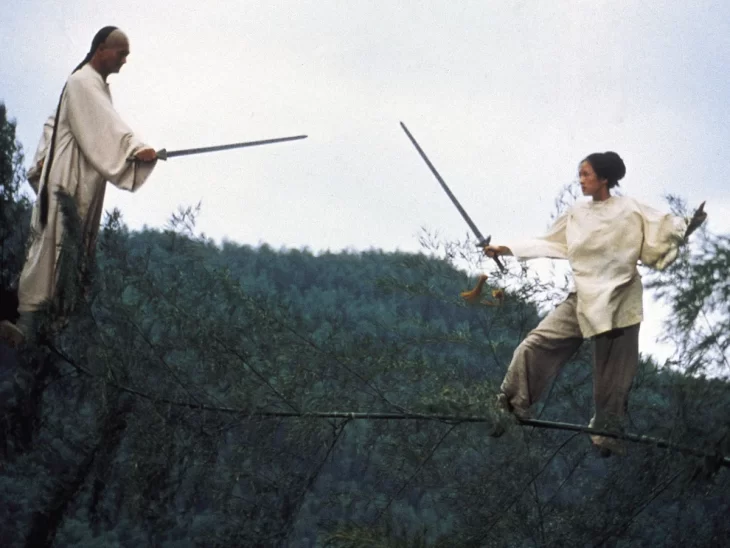 There are three movies I will rewatch any time I need a good cry. This is one of them.
There are three movies I will rewatch any time I need a good cry. This is one of them.
The movie centres on one Guo Jing (郭靖), a Han Chinese man from the Song Dynasty raised in Mongolia by the Khan who took him and his mother in following the strife between the Jin and Song empires (the Jin rise to power shattered the Song Dynasty, and they moved south to become the Southern Song Empire), and the tension between his two identities — a Han Chinese man from the Southern Song Empire and a man raised as a Mongol, by the Khan, and sworn brother to Mongols.
And it was great! A whole lot of fun; but with some caveats.
The first is that, as this was based on a novel, there is a lot of information packed into a relatively short amount of time (just over 2 hours), and if you’re not paying attention, you miss an awful lot. For those of us unfamiliar with the source material, it did lessen the emotional impact of certain scenes. It might be just my 40 episode drama-watching brain, but this probably could have been a couple of movies.
An awful lot is glossed over rather quickly in what feels like a “Previously On” moment. I was left with the feeling that there was a prequel movie that I have not seen. I haven’t done any research on whether that was the case as of the writing of this. When we finally get into the meat of the movie, Guo Jing has separated from the woman he loves, whom he travelled all over the Middle Lands and trained with, and has already mastered the techniques from a much-sought-after scroll, whom this young woman (Huang Rong (黃蓉)) apparently has possession of. Following so far?
 Our heroes Huang Rong and Guo Jing
Our heroes Huang Rong and Guo Jing
Separated, Huang Rong is pursued by three of the five masters — a martial art specialists from three of the five styles of martial arts (kung fu… sort of) in the Middle Lands. The lead, Venom West, desperately wants the scroll she carries. He was, apparently, preciously defeated by Guo Jing in an encounter we only get flashbacks of (rather disappointingly).
I’m not going to give too much away, but eventually the lovers reunite, and simultaneously save both the Khan and the Southern Song Empire; the Khan from Venom West, who has gone mad, and the Southern Song from the Mongols, who were just themselves saved.
The story itself was very fun, with some impressive action sequences, but I find myself a little disappointed that they weren’t more grounded. Remember when I mentioned that the emphasis was on fantasy? Well, all the fighting in this was basically magic battles between wizards. There was actually very little proper fighting involved. Given the training videos I saw, I was expecting a little more proper combat.
One of several videos that promised something that wasn’t delivered.
Crouching Tiger, Hidden Dragon leant into the fantasy, what with the flying through the air and landing on bamboo as if their bones were hollow/they could actually levitate. But the fighting in that was actual fighting; highly choreographed, but fighting all the same. With that as my only reference for Chinese movies, and with the training videos, I do feel a little cheated. Particularly since in several of the training videos, I could recognise the styles employed.
There was no real hand-to-hand combat in the film.
Now, it’s entirely possible that the training shorts I saw were actually for a completely different project. I do know that many of these actors are incredibly busy, working or three or more projects a year. So it’s entirely possible that all the videos were mislabelled and were for something else entirely.
The movie also ends in what feels like the middle of the story. Hardly surprising since it’s the first book in a trilogy. The sort-of middle-of-the-story vignette that this film presents is not unlike My Neighbour Totoro. Both movies left me with an “this is unfinished” feeling.
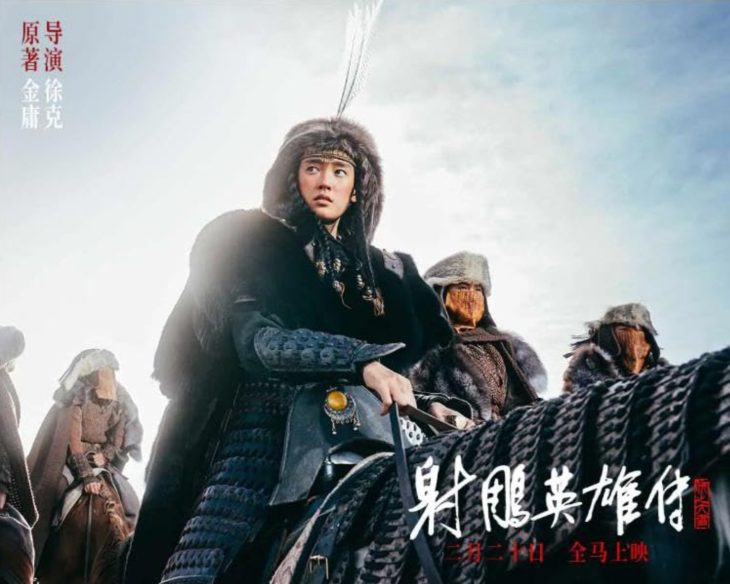 The Khan’s daughter and a love rival. I loved her character a lot.
The Khan’s daughter and a love rival. I loved her character a lot.
Despite the slight disappointment of all the fights being wizard battles, and the unusual feeling of being shown but a snippet of a story, however, the movie was a whole lot of fun. I loved hearing both Mandarin and Mongolian. I loved how the Mongols weren’t made the villains (I initially thought they were, and it would have been easy to have made them thus — kind of like Russians for 80s Hollywood movies). And I adored having something other than the increasingly formulaic and mindless films we’ve been fed of late to spend a Sunday afternoon watching.
I really do wish more foreign films would get wide releases like this. We could use the fresh perspectives and fascinating stories other cultures bring. I had a lot of fun with this one. If you are going to see it, you must pay close attention, but it was certainly worth it. If there are sequels that make it out our way, I’ll definitely be watching. But first, I need to get my hands on English versions of these books!
When S.M. Carrière isn’t brutally killing your favorite characters, she spends her time teaching martial arts, live streaming video games, and cuddling her cat. In other words, she spends her time teaching others to kill, streaming her digital kills, and a cuddling furry murderer. Her most recent titles include Daughters of Britain, Skylark and Human. Her serial The New Haven Incident is free and goes up every Friday on her blog.
Free Fiction Monday: Discovery
Pita Cardenas finds herself with the toughest case of her career. The only attorney in the small town of Rio Gordo, she decides to fight the biggest railroad company in the state to get compensation for the widow of a man who might have raced a train.
Everyone thinks the man guilty. Even Pita believes that. But the truth, once discovered, proves far more complicated that Pita could have imagined.
Another powerful and haunting mystery story by New York Times bestselling author Kristine Kathryn Rusch, “Discovery” was nominated for the Shamus Award for Best Short Story.
“Discovery” is available for one week on this site. The ebook is also available on all retail stores, as well as here.
Discovery By Kristine Kathryn Rusch“OVER THERE.” Pita Cardenas waved a hand at the remaining empty spot on the floor of her office. The Federal Express deliveryman rested a hand on top of the stack of boxes on his handcart.
“I don’t think it’ll fit.”
It probably wouldn’t. Her office was about the size of the studio apartment she’d had when she went to law school in Albuquerque. She could have had a cubicle with more square footage if she’d taken the job that La Jolla, Webster, and Garcia offered her when she graduated from law school five years before.
But her mother had been dying, and had refused to leave Rio Gordo. So Pita had come back to the town she thought she’d escaped from, put out her shingle, and had gotten a handful of cases, enough to pay the rent on this sorry excuse for an office. If she’d wanted something bigger, she would have had to buy, and even at Rio Gordo’s depressed prices, she couldn’t afford payments on the most dilapidated building in town.
She stood up. The Fed Ex guy, who drove here every day from Lubbock, was looking at her with pity. He was trim and tanned, with a deep West Texas accent. If she had been less tired and overwhelmed, she would have flirted with him.
“Let’s put this batch in the bathroom,” she said and led the way through the rabbit path she’d made between the boxes. The Fed Ex guy followed, dragging the six boxes on his hand truck and probably chafing at the extra time she was costing him.
She opened the door. He put the boxes inside, tipped an imaginary hat to her, and left. She’d have to crawl over them to get to the toilet, but she’d manage.
Six boxes today, twenty yesterday, thirty the day before. Dwyer, Ralbotten, Seacur and Czolb was burying her in paper.
Of course, she had expected it. She was a solo practitioner in a town whose population probably didn’t equal the number of people who worked at DRS&C.
People had told her she was crazy to take this case. But she was crazy like an impoverished attorney. Every other firm in New Mexico had told her client, Nan Hughes, to settle. The problem was that Nan didn’t want to settle. Settling meant losing everything she owned.
Pita took the case and charged Nan two thousand dollars, with more due and owing when (if) the case went to trial. Pita didn’t plan on taking the case to trial. At trial, she wouldn’t just get creamed, she’d be pureed, sautéed and recycled.
But she did plan to work for that two grand. She would spend exactly one month filing motions, doing depositions, and listening to offers. She figured once she had actual numbers, she’d be able to convince Nan to take a deal.
If not, she’d resign and wish Nan luck finding a new attorney.
Her actions wouldn’t hurt Nan. Nan had a spectacular loser of a case. She was taking on the railroads and two major insurance companies. She had no idea how bad things could get.
Pita would show her. Nan wouldn’t exactly be happy with her lot—how could she be, when she’d lost her husband, her business, and her home on the same day?—but she would finally understand how impossible the winning was.
Pita was doing her a favor and making a little money besides.
And what was wrong with that?
***
At its heart, the case was simple. Ty Hughes tried to beat a train and failed. He survived long enough to leave his wife a voice mail message, which Pita had heard in all its heartbreaking slowness:
“Nan baby, I tried to beat it. I thought I could beat it.”
Then his diesel truck engine caught fire and he died, horribly alive, in the middle of the wreck.
The accident occurred on a long stretch of brown nothingness on the New Mexico side of the Texas/New Mexico border. A major highway ran a half mile parallel to the tracks. On the opposite side of the tracks stood the Hughes ranch and all its outbuildings.
Nan Hughes and the people who worked her spread watched the accident. She didn’t answer her cell because she’d left it on the kitchen counter in her panic to get down the dirt road where her husband’s cattle truck had been demolished by a fast-moving train.
And not just any train.
This train pulled dozens of oil tankers.
It was a miracle the truck engine fire hadn’t spread to the tankers and the entire region hadn’t exploded into one great fireball.
Pita had been familiar with the case long before Nan Hughes came to her. For weeks, the news carried stories about dead cattle along the highway, the devastated widow, the ruined ranch, and the angry railroad officials who had choice (and often bleeped) words about the idiots who tried to race trains.
It didn’t matter that the crossing was unmarked. Even if Ty hadn’t left that confession on Nan’s voice mail (which she had deleted but which the cell company was so thoughtfully able to retrieve), trains in this part of the country were visible for miles in either direction.
The railroads wanted the ranch, the cattle (what was left of them), the life insurance money, and millions from the ranch’s liability insurance. The liability insurance company was willing to settle for a simple million, and the other law firms had told Nan to sell the ranch, and pay the railroads from the proceeds. That way she could live on Ty’s life insurance and move away from the site of the disaster.
But Nan kept saying that Ty would haunt her if she gave in. That he had never raced a train in his life. That he knew how far away a train was by its appearance against the horizon—and that he had taught her the same trick.
When Pita gently asked why Ty had confessed to trying to beat the train, Nan had burst into tears.
“Something went wrong,” she said. “Maybe he got stuck. Maybe he hadn’t looked up. He was in shock. He was dying. He was just trying to talk to me one last time.”
Pita could hear any good lawyer tear that argument to shreds, just using Ty’s wording. If Ty wanted to talk with her, why hadn’t he told her he loved her? Why had he talked about the train?
Pita had gently asked that too. Nan had looked at her from across the desk, her wet cheeks chapped from all the tears she’d shed.
“He knew I saw what happened. He wanted me to know he never would have done that to me on purpose.”
In this context, “on purpose” had a lot of different definitions. Ty Hughes probably didn’t want his wife to see him die in a train wreck, certainly not in a train wreck he caused. But he had crossed a railroad track with a double-decker cattle truck filled carrying two hundred head. He had no acceleration, and no maneuverability.
He’d taken a gamble, and he’d lost.
At least, Nan hadn’t seen the fire in the cab. The truck had flipped over the train, landing on the highway side of the tracks, and had been impossible to see from the ranch side. Whatever Ty Hughes’s last few minutes had looked like, Nan had missed them.
She had only her imagination, her anger at the railroads, and her unshakeable faith in her dead husband.
Those were not enough to win a case of this magnitude.
If someone asked Pita what her case really was (and if this imaginary someone could get her to answer honestly), what she’d say was that she was going to try Ty Hughes before his wife, and show her how impossible a defense of the man’s actions that morning would be in court.
And Pita believed her own powers of persuasion were enough to convince her jury of one to settle.
***
But the boxes were daunting. In them were bits and pieces of information, reproduced letters and memos that probably showed some kind of railroad duplicity, however minor. A blot on an engineer’s record, for example, or an accident at that same crossing twenty years before.
If Pita had the support of a giant law firm like La Jolla, Webster, and Garcia, she might actually delve into that material. Instead, she let it stack up like unread novels in the home of an obsessive compulsive.
The only thing she did do was take out the witness list, which had come in its own envelope as part of court-ordered discovery. The list had the witnesses’ names along with their addresses, phone numbers, and the dates of their depositions. DRS&C was so thorough that each witness had a single line notation at the bottom of the cover sheet describing the reason the witness had been deposed in this case.
The list would help Pita in her quest to recreate the accident itself. She had dozens of questions. Had someone inspected the truck to see if it malfunctioned at the time of the accident? Why had Ty stayed in the truck when it was clear that it was going to catch fire? How badly had he been injured? How good was Ty’s eyesight? And how come no one helped him before the truck caught fire?
She was going to cover all her bases. All she needed was one argument strong enough to let Nan keep the house.
She was afraid she might not even find that.
DRS&C’s categories were pretty straightforward. They had categories for the ranch, the railroad, and the eyewitnesses.
A number of the witnesses belonged to separate lawsuits, started because of the fender benders on the nearby highway. About a dozen cars had damage—some while they were stopped beside the road, and others because they’d been going too fast to stop when the train accident occurred.
Pita started charting the location of the cars as she figured this category out, and realized all of them had been in the far inside lane, going east. People who had pulled over to help Ty and the railroad employees had instead been dealing with accidents involving their own cars.
A separate group of accident victims had resolved insurance claims: their vehicles had been hit or had hit a cow that had escaped from the cattle truck. One poor man had had his SUV gored by an enraged bull.
Cars heading west had had an easier time of things. None had hit each other and a few had stopped. Of those who had stopped, some were listed as 911 callers. One had grabbed a fire extinguisher and eventually tried to put out the truck cab fire. That person had prevented the fire from spreading to the tankers.
But the category that caught Pita’s attention was a simple one. Several people on the list had been marked “Witness,” with no accompanying explanation.
One had an extra long zip code, and as she entered it into her own computer data base, she realized that the last three digits weren’t part of the zip code at all.
They were a previous notation, one that hadn’t been deleted.
Originally, this witness had been in the 911 category.
She decided to start with him.
***
C.P. Williams was a Texas financier of the Houston variety, even though his offices were in Lubbock. He wore cowboy boots, but they were custom made, hand-tooled jobbies that wouldn’t last fifteen minutes on a real ranch. He had an oversized silver belt buckle and he wore a bolo tie, but his shiny suit was definitely not off the rack and neither was the silk shirt underneath it. His cufflinks matched his belt buckle and he twisted them as he led Pita into his office.
“I already gave a deposition,” he said.
“Before I was on the case,” Pita said.
His office was big, with original oil paintings of the Texas Hill Country, and a large but not particularly pretty view of downtown Lubbock.
“Can’t you just read it?” He slipped behind a custom-made desk. The chair in front was made of hand-tooled leather that made her think of his impractical boots.
She sat down. The leather pattern bit through the thin pants of her best suit.
“I have a few questions of my own.” She took out a small tape recorder. “I may have to call you in for a second deposition, but I hope not.”
Mostly because she would have to rent space as well as a court reporter in order to conduct that deposition. Right now, she simply wanted to see if any testimony was worth the extra cost.
“I don’t have that much time. I barely have enough time to see you now.” He glanced at his watch for emphasis.
She clicked on the recorder. “Then let’s do this quickly. Please state your name and occupation for the record.”
He did.
When he finished, she said, “On the morning of the accident—”
“I never saw that damn accident,” he said. “I told the other lawyers that.”
She was surprised. Why had they talked with him then? She was interviewing blind. So she went with the one fact she knew.
“You called 911. Why?”
“Because of the train,” he said.
“What about the train?”
“Damn thing was going twice as fast as it should have been.”
For the first time since she’d taken this case, she finally felt a flicker of real interest. “Trains speed?”
“Of course trains speed,” he said. “But this one wasn’t just speeding. It was going well over a hundred miles an hour.”
“You know that because…?”
“I was going 70. It passed me. I had nothing else to do, so I figured out the rate of passage. Speed limits for trains on that section of track is 65. Most weeks, the trains match me, or drop back just a bit. This one was leaving me in the dust.”
She was leaning forward. If the train was speeding—and if she could prove it—then the accident wasn’t Ty’s fault alone. He wouldn’t have been able to judge how fast the train was going. And if it was going twice as fast as usual, it would have reached him two times quicker than he expected.
“So why call 911?” she asked. “What can they do?”
“Not damn thing,” he said. “I just wanted it on record when the train derailed or blew through a crossing or hit some kid on the way to school.”
“You could have contacted the railroad or maybe the NTSB,” she said. “They could have fined the operators or pulled the engineers off the train.”
“I could have,” he said. “I didn’t want to.”
She frowned. “Why not?”
“Because I wanted the record.”
And because he repeated that sentence, she felt a slight shiver. “Have you done this before? Clocked trains going too fast, I mean.”
“Yeah.” He sounded surprised at the question. “So?”
“Do you call 911 on people speeding in cars?”
His eyes narrowed. “No.”
“So why do you call on trains?”
“I told you. The potential damage—”
“Did you contact the police after the accident, then?” she asked.
“No. It was already on record. They could find it. That attorney did.”
“I wouldn’t know how to compute how fast a train was going while I was driving,” she said. “I mean, if we were going the same speed or something close, sure. But not an extra thirty miles an hour or more. That’s quite a trick.”
“Simple math,” he said. “You had to do problems like that in school. We all did.”
“I suppose,” she said. “But it’s not something I would think to do. Why did you?”
For the first time, he looked down. He didn’t say anything.
“Do you have something against the railroad?” she asked.
His head shot up. “Now you sound like them.”
“Them?”
“Those other lawyers.”
She started to nod, but made herself stop. “What did they say?”
His lips thinned. “They said that I’m just making stuff up to get the railroad in trouble. They said that I’m pathetic. Me! I outearn half those walking suits. I make money every damn day, and I do it without investing in any land holdings or railroad companies. They have no idea who I am.”
Neither did she, really, but she thought she’d humor him.
“You’re a good citizen,” she said.
“Damn straight.”
“Trying to protect other citizens.”
“That’s right.”
“From the railroads.”
“They think they can run all over the countryside like they’re invulnerable. That train pulling oil tankers, imagine if it had derailed in that accident. You’d’ve heard the explosion in Rio Gordo.”
Probably seen it too. He had a point.
“Tell me,” she said. “Is there any way we can prove the train was going that fast?”
“The 911 call,” he said.
“Besides the 911 call,” she said.
He leaned back as he considered her question. “I’m sure a lot of people saw it. Or you could examine that truck. You know, it’s just basic physics. If you vary the speed of an incoming train in an impact with a similar truck frame, you’ll get differing results. I’m sure you can find some experts to testify.”
You could find experts to testify on anything. But she didn’t say that. She was curious about his expertise, though. He seemed to know a lot about trains.
She asked, “Wouldn’t a train derail at that speed when it hit a truck like that?”
“Actually, no. It would be less likely to derail when it was going too fast. That truck was a cattle truck, right? If the train hit the cattle car and not the cab, then the train would’ve treated that truck like tissue. Most cattle cars are made of aluminum. At over a hundred miles per hour, the train would have gone through it like paper.”
Interesting. She would check that.
“One last question, Mr. Williams. When did the railroad fire you?”
He blinked at her, stunned. She had caught him. That’s why DRS&C’s attorneys had called him pathetic. Because he had a reason for his train obsession.
A bad reason.
“That was a long time ago,” he whispered.
But she still might be able to use him if he had some kind of expertise. If his old job really did require that he clock trains by sight alone.
“What did you do for them?”
He coughed, then had the grace to finally meet her gaze. “I was a security guard at the station here in Lubbock.”
Security guard. Not an engineer, not anyone with special training. Just a guy with a phony badge and a gun.
“That’s when you learned to clock trains,” she said.
He smiled. “You have to do something to pass the time.”
She bit back her frustration. For a few minutes, he’d given her some hope. But all she had was a fired security guard with a grudge.
She wrapped up the interview as politely as she could, and headed into the bright Texas sunshine.
And allowed herself one small moment to wish that C.P. Williams had been a real witness, one that could have opened this case wide.
Then she sighed, and went back to preparing her case for her jury of one.
***
Most everyone else in the witness category on DRS&C’s list was either a rubbernecker or someone who had made a false 911 call. Pita had had no idea how many people reported a crime or an accident after seeing coverage of it on television, but she was starting to learn.
She was also learning why the police didn’t fine or arrest these people. Most of them were certifiably crazy.
Pita was beginning to think the list was worthless. Then she interviewed Earl Jessup Jr.
Jessup was a contractor who had been on his way to Lubbock to pick up a friend from the airport when he’d seen the accident. He’d pulled over, and because he was so well known in Rio Gordo, someone had remembered he was there.
When Pita arrived at his immaculate house in one of Rio Gordo’s failed housing developments, she promised herself she wouldn’t interview any more witnesses. Then Jessup pulled the door open. He smiled in recognition. So did she.
She had talked with him in the hospital cafeteria during her mother’s final surgery. He’d been there for his brother, who’d been in a particularly horrendous accident, and who had somehow managed to survive.
They hadn’t exchanged names.
He was a small man with brown hair in need of a good trim. His house smelled faintly of cigarette smoke and aftershave. The living room had been modified—lowered furniture, and wide paths cut through what had once been wall-to-wall carpet.
“Your brother moved in with you, huh?” she asked.
“He needed somebody,” Jessup said with a finality that closed the subject.
He led her into the kitchen. On the right side of the room, the cabinets had been pulled from the walls. A dishwasher peeked out of the debris. On the left were frames for lowered countertops. Only the sink, the stove and the refrigerator remained intact, like survivors in a war zone.
He pulled a chair out for her at the kitchen table. The table was shorter than regulation height. An ashtray sat near the end of the table, but no chair. That had to be where his brother usually parked.
Pita pulled out her tape recorder and a notebook. She explained again why she was there, and asked Jessup to state some information for the record. She implied, as she had with all the others, that this informal conversation was as good as being under oath.
Jessup smiled as she went through her spiel. He seemed to know that his words would have no real bearing on the case unless he was giving a formal deposition.
“I didn’t see the accident,” he said. “I got there after.”
He’d missed the fender benders and the first wave of the injured cows. He’d pulled up just as the train stopped. He’d been the one to organize the scene. He’d sent two men east and two men west to slow traffic until the sheriff arrived.
He’d made sure people in the various accidents exchanged insurance information, and he got the folks who’d suffered minor bumps and bruises to the side of the road. He directed a couple of teenagers to keep an eye on the injured animals, and make sure none of them made for the road again.
Then he’d headed down the embankment toward the overturned truck.
“It wasn’t on fire yet?”
“No,” he said. “I have no idea how it got on fire.”
She frowned. “It overturned. It was leaking diesel and the engine was on.”
“So the fancy Dallas lawyers tell me,” he said.
“You don’t believe them?”
“First thing any good driver does after an accident is shut off his engine.”
“Maybe,” she said. “If he’s not in shock. Or seriously injured. Or both.”
“Ty had enough presence of mind to make that phone call.” Everyone in Rio Gordo knew about that call. Some even cursed it, thinking Nan could own the railroads if Ty hadn’t picked up his cell. “He would’ve shut off his engine.”
Pita wasn’t so sure.
“Besides, he wasn’t in the cab.”
That caught her attention. “How do you know?”
“I saw him. He was sitting on some debris halfway up the road. That’s why I was in no great hurry to get down there. He’d gotten himself out, and there wasn’t much I could do until the ambulance arrived.”
Jessup had a construction worker’s knowledge of injuries. He knew how to treat bruises and he knew what to do for trauma. He’d talked with her about that in the cafeteria, when he’d told her how helpless he’d felt coming on his brother’s car wrapped around a utility pole. He hadn’t been able to get his brother out of the car—the ambulance crew later used the jaws of life—and he was afraid his brother would bleed out right there.
“But you went to help Ty anyway,” Pita said.
Jessup got up, walked to the stove, and lifted up the coffee pot. He’d been brewing the old-fashioned way, in a percolator, probably because he didn’t have any counter space.
“Want some?” he asked.
“Please,” she said, thinking it might get him to talk.
He pulled two mugs out of the dishwasher, then set them on top of the stove. “I thought he was going to be fine.”
“You’re not a doctor. You don’t know.” She wasn’t acting like a lawyer now. She was acting like a friend, and she knew it.
He grabbed the pot, and poured coffee into both mugs. Then he brought them to the table.
“I did know,” he said. “I knew there was trouble, and I left.”
“Sounds like you did a lot before you left,” she said, trying to move him past this. She remembered long talks about his guilt over his brother’s accident. “Organizing the people, making sure Ty was okay. Seems to me that you did more than most.”
He shook his head.
“What else could you have done?” she asked.
“I could’ve gone down there and helped him,” he said. “If nothing else, I could’ve defended him against those men with guns.”
She went cold. Men with guns. She hadn’t heard about men with guns.
“Who had guns?” she asked.
He gave her a self-deprecating smile, apparently realizing how dramatic he had sounded. “Everyone has guns. This is the Texas-New Mexico border.”
He’d said too much, and he clearly wanted to backtrack. She wouldn’t let him.
“Not everyone uses them at the scene of an accident,” she said.
“If they’d’ve been smart, they might have. That bull was mighty scary.”
“Who had guns?” she asked.
He sighed, clearly knowing she wouldn’t back down. “The engineers. They carried their rifles out of the train.”
She raised her eyebrows, not sure what to say.
He seemed to think she didn’t believe him, so he went on. “I figured they were carrying the guns to shoot any livestock that got in their way. Made me want my gun. I’d been thinking about the accident, not a bunch of injured animals that weighed eight times what I did.”
“Why did you leave?” she asked.
“It was a judgment call,” he said. “I was watching those engineers walk. With purpose.”
As she listened to Jessup recount the story, she realized the purpose had nothing to do with cattle. These men carried their rifles like they intended to use them. They weren’t looking at the carnage. After they’d finished inspecting the train for damage, they didn’t look at the train either.
Instead, they stared at Ty.
“For the entire two-mile walk?” she asked.
“I don’t know,” Jessup said. “That’s when I decided not to stay. I thought Ty was going to be fine.”
He paused. She waited, knowing if she pushed him, he might not say any more.
Jessup ran a hand through his hair. “I knew that in situations like this tempers get out of hand. I couldn’t be the voice of reason. I might even get some of the blame.”
He wrapped his hands around his coffee mug. He hadn’t touched the liquid.
“Besides,” he said, “I could see Ty’s cowboys. They were riding around the train and heading toward the loose cattle near the highway. If things got ugly, they could help him. I headed back up the embankment, went to my truck, and drove on to Lubbock.”
“Then I don’t understand why this is bothering you,” she said. “You did as much as you could, and then you left it to others, the ones who needed to handle the problem.”
“Yeah,” he said softly. “I tell myself that.”
“But?”
He tilted his head, as if shaking some thoughts loose. “But a couple of things don’t make sense. Like why did Ty go back into the cab of that truck? And how come no one smelled the diesel? Wouldn’t it bother them so close to the oil tankers?”
She waited, watching him. He shrugged.
“And then there’s the nightmares.”
“Nightmares?” she asked.
“I get into my truck, and as I slam the door, I hear a gunshot. It’s half a second behind the sound of the door slamming, but it’s clear.”
“Did you really hear that?” she asked.
“I like to think if I did, I would’ve gone back. But I didn’t. I just drove away, like nothing had happened. And a friend of mine died.”
He didn’t say anything else. She took another sip of her coffee, careful not to set the mug to close to her recorder.
“No one else reported gunshots,” she said.
He nodded.
“No one else saw Ty outside that cab,” she said.
“He was in a gully. I was the only one who went down the embankment. You couldn’t see him from the road.”
“And the truck? Could you see it?”
He shook his head.
“What do you think happened?” she asked.
“I don’t know,” he said, “and it’s driving me insane.”
***
It bothered her too, but not in quite the same way.
She found Jessup in DRS&C’s list of 911 nutcases. He’d been buried among the crazies, just like important information was probably hidden in the boxes that littered her office floor.
No one else had seen the angry engineers or Ty out of the truck, but no one could quite figure out how he’d made that cell phone call either. If he’d been sitting on some debris outside the cab, that made more sense than calling from inside, while bleeding, with the engine running and diesel dripping.
But Jessup was right. It raised some disturbing questions.
They bothered her, enough so that she called Nan on her cell phone during the drive back to her office.
“Do you have a copy of the autopsy report for Ty?” Pita asked.
“There was no autopsy,” Nan said. “It’s pretty clear how he died.”
Pita sighed. “What about the truck? What happened to it?”
“Last I saw, it was in Digger’s Salvage Yard.”
So Pita pulled into the salvage yard, and parked near a dented Toyota. Digger was a good ole boy who salvaged parts, and when he couldn’t, he used a crusher to demolish the vehicles into metal for scrap.
But he still had the cab of that truck—insurance wouldn’t release it until the case was settled.
For the first time, she looked at the cab herself, but couldn’t see anything except charred metal, a steel frame, and a ruined interior. She wasn’t an expert, and she needed one.
It took only a moment to call an old friend in Albuquerque who knew a good freelance forensic examiner. The examiner wanted $500 plus expenses to travel to Rio Gordo and look at the truck.
Pita hesitated. She could’ve – and should’ve – called Nan for the expense money.
But the examiner’s presence would raise Nan’s hopes. And right now, Pita couldn’t do that. She was trusting a man she’d met late night at the hospital, a man who talked her through her mother’s last illness, a man she couldn’t quite get enough distance from to examine his veracity.
She needed more than Jessup’s nightmares and speculations. She needed something that might pass for proof.
***
“I can’t tell you when it got there,” said the examiner, Walter Shepard. He was a slender man with intense eyes. He wore a plaid shirt despite the heat and tan trousers that had pilled from too many washings.
He was sitting in Pita’s office. She had moved some boxes aside so that the path into the office was wider. She’d also found a chair that had been buried since the case began.
He pushed some photographs onto her desk. The photographs were close-ups of the truck’s cab. He’d thoughtfully drawn an arrow next to the tiny hole in the door on the driver’s side.
“It’s definitely a bullet hole. It’s too smooth to be anything else,” he said. “And there’s another in the seat. I was able to recover part of a bullet.”
He shifted the photos so that she could see a shattered metal fragment.
“The problem is I can’t tell you anything else, except that the bullet holes predate the fire. I can’t tell you how long they were there or how they got there. They could be real old. Or brand new. I can’t tell.”
“That’s all right.” A bullet hole, along with Jessup’s testimony, was enough to cast doubt on everything. She felt like she could go to DRS&C and ask for a settlement.
She wasn’t even regretting that she hadn’t worked on contingency. This case was proving easier than she had thought it would be.
“I know you asked me to look for evidence of shooting or a fight,” Shepard said, “but I wouldn’t be doing my job if I let it go at that. The anomaly here isn’t the bullets. It’s the fire itself.”
She looked up from the photos, surprised. Shepard wasn’t watching her. He was still studying the photographs. He put a finger on one of them.
“The diesel leaked. There’s runoff along the tank and a drip pattern that trails to the passenger side of the cab.”
The cab had landed on its passenger side.
“But the fire started here.” He was touching the photo of the interior of the cab. He pushed his finger against the image of the ruined seat. “See how the flames spread upwards. You can see the burn pattern. And fuel fed it. It burned around something—probably the body—so it looks to me like someone poured fuel onto the body itself and lit it on fire. I didn’t find a match, but I found the remains of a Bic lighter on the floor of the cab. It melted but it’s not burned the way everything else is. I think it was tossed in after the fire started.”
Pita was having trouble wrapping her mind around what he was saying. “You’re saying someone deliberately started the fire? So close to oil tankers?”
“I think that someone knew the truck wouldn’t explode. The fire was pretty contained.”
“Some people from the highway had a fire extinguisher in their car. It was too late to save Ty.”
“You’ll want your examiner to look at the body again,” Shepard said. “I have a hunch you’ll find that your client’s husband was dead before he burned, not after.”
“Based on this pattern.”
“A man doesn’t sit calmly and let himself burn to death,” Shepard said. “He was able to make a phone call. He was conscious. He would have tried to get out of that cab. He didn’t.”
Pita was shaking. If this was true, then this case went way beyond a simple accident. If this was true, then those engineers shot Ty and tried to cover it up.
Ballsy, considering how close to the road they had been.
But the other drivers had been preoccupied with their own accidents and the injured cows and stopping traffic. No one except Jessup had even tried to come down the embankment.
And the engineers, who drove the route a lot, would have known how hard that truck was to see from the road.
They would have figured that the burning cab would get put out once someone saw the smoke. No wonder they’d lit the body. They didn’t want to risk catching the cab on fire, and leaving the bullet-ridden corpse untouched.
“You’re sure?” Pita asked.
“Positive.” Shepard gathered the photos. “If I were you, I’d take this to the state police. You don’t have an accident here. You have cold-blooded murder.”
***
The next few weeks became a blur. DRS&C dropped the suit, becoming the friendliest big law firm that Pita had ever known. Which made her wonder when they’d realized that the engineers had committed murder.
Either way, it didn’t matter. DRS&C was willing to work with her, to do whatever it took to “make Mrs. Hughes happy.”
Nan wouldn’t be happy until her husband’s killers were brought to justice. She snapped into action the moment the state coroner confirmed Shepard’s hunches. Ty had been shot in the skull before he died, and then his body had been burned to cover up the crime.
If Nan hadn’t worked so hard and believed in her husband so much, no one would have known.
The story came out slowly. The train had been speeding when Ty crossed the tracks. Williams’ estimate of more than 100 miles per hour was probably correct—enough for the railroads to have liability right there.
But the engineers, both frightened by the accident itself and terrified for their jobs, had walked the length of the train to Ty’s overturned truck and, finding him alive and relatively unhurt, let their anger explode.
They’d threatened him with the loss of everything if he didn’t confess that he had failed to beat the train. He’d made the call to satisfy them. But it hadn’t worked. Somehow—and neither man was going to admit how (not even more than a year later at sentencing)—one of the rifles had gone off, killing him. Then they’d stuffed him in the cab—whose ignition was off—poured some diesel from the spill on him, and lit him on fire.
They watched him burn for a few minutes before going up the embankment to see if anyone had a fire extinguisher in his car. Fortunately someone did. Otherwise, they planned to have someone drive them the two miles to the engine for the train’s fire extinguishers.
The engineers were eventually convicted, Nan got to keep her ranch and her husband’s reputation, and the railroads kept trying to settle.
But Pita insisted that Nan hire an attorney who specialized in cases against big companies. Pita helped with the hire, finding someone with a great reputation who wasn’t afraid of a thousand boxes of evidence and, more importantly, would work on contingency.
“You sure you don’t want it?” Nan had asked, maybe two dozen times.
And each time, Pita had said, “Positive. The case is too big for me.”
Although it wasn’t. She could have gone to La Jolla, Webster, and Garcia as a rainmaker, someone who brought in a huge case and made millions for the company.
But she didn’t.
Because this case had taught her a few things.
She’d learned that she hated big cases with lots and lots of evidence.
She’d learned that she really didn’t care about the money. (Although the ten thousand dollar bonus that Nan had paid her—a bonus Pita hadn’t asked for—had come in very handy.)
And she learned how valuable it was to know the people of her town. If she hadn’t spent all those evenings in the cafeteria with Jessup, she wouldn’t have trusted his story, and she never would have hired the forensic examiner.
Her mom had been right, all those years ago. Rio Gordo wasn’t a bad place. Yeah, it was impoverished. Yeah, it was filled with dust, and didn’t have a good nightlife or a great university.
But it did have some pretty spectacular people.
People who congratulated Pita for the next year on her success in the Hughes case. People who now came to her to do their wills or their prenups. People who asked her advice on the smallest legal matters, and believed her when she gave them an unvarnished opinion.
Her biggest case had helped her discover her calling: She was a small town attorney—someone who cared more about the people around her than the money their cases could bring in.
She wouldn’t be rich.
But she would be happy.
And that was more than enough.
____________________________________________
“Discovery” is available for one week on this site. The ebook is also available on all retail stores, as well as here.
“Discovery”
Copyright © 2017 by Kristine Kathryn Rusch
First published Alfred Hitchcock’s Mystery Magazine, November, 2008.
Published by WMG Publishing
Cover and Layout copyright © 2017 by WMG Publishing
Cover design by WMG Publishing
Cover art copyright © Brandon Alms/Dreamstime
This book is licensed for your personal enjoyment only. All rights reserved. This is a work of fiction. All characters and events portrayed in this book are fictional, and any resemblance to real people or incidents is purely coincidental. This book, or parts thereof, may not be reproduced in any form without permission.
Monday Musings: A Little Piece of Italy
Last April, after a grief-filled winter, and a previous fall that was more difficult than I could possibly describe, Nancy and I went to Italy for three weeks — a long-delayed trip that had once been intended as a celebration of our 60th birthdays, both of which were more than a year passed by then.
While in Italy, we spent four lovely days in the ridiculously picturesque city of Venice, and while there, we took a day to visit Murano, a portion of the city that is renowned for its glass factories. It is, if you are not familiar with the history of glass-making in Venice, home to the Murano Glassworks, one of the most renowned glass producers in the world. It is also a gorgeous part of the city. We had a great time there, walking around, looking in shops, getting some food, enjoying the play of color and light on the waterways and old buildings. We watched a glass-blowing exhibition at the Murano factory, and bought many gifts for friends and family back home, as well as for Nancy.
 While walking around, searching for a small souvenir of my own, I stopped in at a modest shop on a square, and found, among other things, several small squares of glass in which were embedded finely-wrought images of bare trees. I was captivated and started up a halting conversation with the shop’s owner, who spoke only a bit more English than I did Italian. We managed to communicate, though, and had a very nice exchange. The works in question, it turned out, had been done by the man’s father. He shaped the trees out of strands of steel wool and then placed them in small molds which he filled with melted glass. Each image came out slightly differently. All of them were delicate and beautiful and utterly unlike anything else I had seen in Venice (or anywhere else, for that matter).
While walking around, searching for a small souvenir of my own, I stopped in at a modest shop on a square, and found, among other things, several small squares of glass in which were embedded finely-wrought images of bare trees. I was captivated and started up a halting conversation with the shop’s owner, who spoke only a bit more English than I did Italian. We managed to communicate, though, and had a very nice exchange. The works in question, it turned out, had been done by the man’s father. He shaped the trees out of strands of steel wool and then placed them in small molds which he filled with melted glass. Each image came out slightly differently. All of them were delicate and beautiful and utterly unlike anything else I had seen in Venice (or anywhere else, for that matter).
I bought the one you see in the photo here. It is small — only 2 1/2 inches by 2 inches — and it is signed — etched, actually — by the artist. I don’t recall what I paid for it. Honestly, I don’t care. I love it. The man wrapped it up in tissue paper, took my payment, and I left his shop, likely never to see him again.
I kept it wrapped up even after we returned to the States. My plan was to open it once we were in our new house, which is what I did. It now sits in my office window, catching the late afternoon sun. And it reminds me of so much. That trip to Italy, which marked the beginning of my personal recovery from the trauma of losing Alex. That day in Venice, which was gloriously fun. The conversation with the kind shopkeeper, whose love for and pride in his father was palpable throughout our exchange. More, that little glass piece is an image of winter, and it sparkles like a gem when the sun hits it. It reminds me that even after a long cold winter, a time of grief and pain, there is always new life and the joy of a new spring.

A cliché, to be sure. But as with so many clichés, it’s rooted in truth.
That little tree — the simplicity of steel wool preserved in glass — brings me joy and comfort all out of proportion to its size and cost. I think Alex would love it, too.
When we were getting ready to move, Nancy and I unloaded a lot of stuff. We talked often of the joy we derived from “lightening our lives,” culling from our belongings items we no longer needed or wanted. And I am so glad to have done that work. But I will admit that I still get great pleasure out of many of things we kept, including little tchotchkes (Yiddish for “trinkets” or “little nothings”) like this one.
Wishing you a wonderful week.
Monday Musings: A Little Piece of Italy
Last April, after a grief-filled winter, and a previous fall that was more difficult than I could possibly describe, Nancy and I went to Italy for three weeks — a long-delayed trip that had once been intended as a celebration of our 60th birthdays, both of which were more than a year passed by then.
While in Italy, we spent four lovely days in the ridiculously picturesque city of Venice, and while there, we took a day to visit Murano, a portion of the city that is renowned for its glass factories. It is, if you are not familiar with the history of glass-making in Venice, home to the Murano Glassworks, one of the most renowned glass producers in the world. It is also a gorgeous part of the city. We had a great time there, walking around, looking in shops, getting some food, enjoying the play of color and light on the waterways and old buildings. We watched a glass-blowing exhibition at the Murano factory, and bought many gifts for friends and family back home, as well as for Nancy.
While walking around, searching for a small souvenir of my own, I stopped in at a modest shop on a square, and found, among other things, several small squares of glass in which were embedded finely-wrought images of bare trees. I was captivated and started up a halting conversation with the shop’s owner, who spoke only a bit more English than I did Italian. We managed to communicate, though, and had a very nice exchange. The works in question, it turned out, had been done by the man’s father. He shaped the trees out of strands of steel wool and then placed them in small molds which he filled with melted glass. Each image came out slightly differently. All of them were delicate and beautiful and utterly unlike anything else I had seen in Venice (or anywhere else, for that matter).
I bought the one you see in the photo here. It is small — only 2 1/2 inches by 2 inches — and it is signed — etched, actually — by the artist. I don’t recall what I paid for it. Honestly, I don’t care. I love it. The man wrapped it up in tissue paper, took my payment, and I left his shop, likely never to see him again.
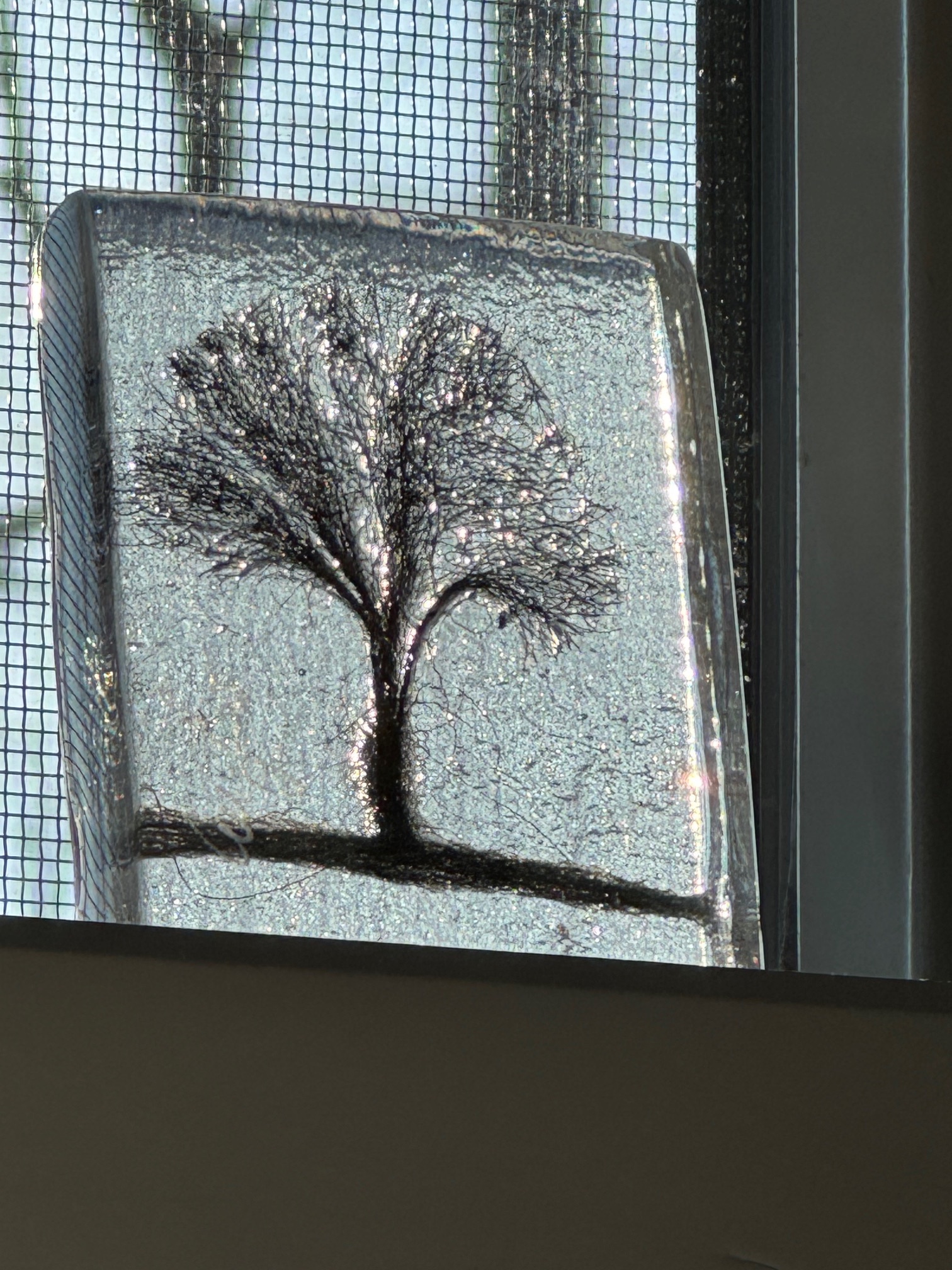 I kept it wrapped up even after we returned to the States. My plan was to open it once we were in our new house, which is what I did. It now sits in my office window, catching the late afternoon sun. And it reminds me of so much. That trip to Italy, which marked the beginning of my personal recovery from the trauma of losing Alex. That day in Venice, which was gloriously fun. The conversation with the kind shopkeeper, whose love for and pride in his father was palpable throughout our exchange. More, that little glass piece is an image of winter, and it sparkles like a gem when the sun hits it. It reminds me that even after a long cold winter, a time of grief and pain, there is always new life and the joy of a new spring.
I kept it wrapped up even after we returned to the States. My plan was to open it once we were in our new house, which is what I did. It now sits in my office window, catching the late afternoon sun. And it reminds me of so much. That trip to Italy, which marked the beginning of my personal recovery from the trauma of losing Alex. That day in Venice, which was gloriously fun. The conversation with the kind shopkeeper, whose love for and pride in his father was palpable throughout our exchange. More, that little glass piece is an image of winter, and it sparkles like a gem when the sun hits it. It reminds me that even after a long cold winter, a time of grief and pain, there is always new life and the joy of a new spring.
 A cliché, to be sure. But as with so many clichés, it’s rooted in truth.
A cliché, to be sure. But as with so many clichés, it’s rooted in truth.
That little tree — the simplicity of steel wool preserved in glass — brings me joy and comfort all out of proportion to its size and cost. I think Alex would love it, too.
When we were getting ready to move, Nancy and I unloaded a lot of stuff. We talked often of the joy we derived from “lightening our lives,” culling from our belongings items we no longer needed or wanted. And I am so glad to have done that work. But I will admit that I still get great pleasure out of many of things we kept, including little tchotchkes (Yiddish for “trinkets” or “little nothings”) like this one.
Wishing you a wonderful week.
Hugh and the Distressing Lack of Videos

It’s Reader Question Monday. We might have to do a Reader Question Wednesday as well, as we received many questions about Amazon and digital ownership.
You mentioned in the introduction that you usually publish a scene but this time would publish a full chapter. It made me wonder if, when planning a book, you explicitly plan for two scenes to a chapter, which seems to be your usual (though not always). Is it a thought out plan or just your natural writing rhythm?
We don’t plan a book in chapters, not do we stick to any rules regarding how long the chapters are or how many scenes they have. Chapters happen because it feels right to have a natural break in the narrative. We have a rough road map of where we are going, but when it comes to actual writing, we plot in chunks.
For example, the current Hugh chunk is
Aberdine sends people -> Hugh goes to Aberdine – > confrontation with the mercenaries.
Originally, we planned on summarizing the Aberdine delegation arrival and kind of stuffing it as a mini-flashback into the scene that opened with Hugh riding toward Aberdine. There didn’t seem like there would be enough happening during that initial meeting to warrant its own scene.
However, as we started writing it and unpacking all of the emotional undercurrents, it grew into its own chapter. This is the joy of writing: the unexpected discoveries.
Why don’t you let people point out the typos?
Because the comment section degenerates into a nitpicking session and then different writing experts start fighting with each other. This is the first draft; it is fragile and unpolished, and too much criticism will kill it. You are seeing it as it is, with all of its flaws. If you want the cleaned up version, you will have to wait until release. Muhahahaha!
So Hugh 2 is being rewritten? In 2020 it was announced that the release was on hold because it was a dark story and the world was in a dark place. I thought that meant it was done. It’s been five years, so when I look around to see if I missed anything it sounds like it may be in progress?
No. Hugh was never written, but we knew what we needed to write and at that particular time, we didn’t have emotional fortitude to do it. Writing books requires a huge emotional investment, because we, as writers, live through he character emotions so we can accurately portray them on the page.
Life interferes as well. Sometimes stuff happens to knock you off your writing rails. Yesterday we didn’t get any writing done because we email the comments from the site to ourselves and Mod R for moderation, and we have to use SMTP for that, because WordPress just kind of quit sending comments to us. For no apparent reason the SMTP callback is failing.

Despite 5 hours with host support chat, it is not fixed. They tossed me back to the SMTP plugin support, which has yet to respond. I wasn’t in the mood to write witty banter after that. I was just tired and needed some tea.
Why don’t you and Gordon make more videos where you talk about writing?
This is one is a little out of the left field. I’m guessing this must’ve come about because of the keyboard typing video. Being a writer and being an influencer are two different things. Writers primarily market their books by doing yet more writing, and influencers primarily provide entertainment while also marketing a product either directly or through ads. Some people admirably combine both.
We are not that great on camera, and we are not very entertaining. We would make terrible influencers. Neither of us has those particular skills and talents. Thankfully, we are not celebrities by any measure, so that is not required of us.
Our posts are mostly about what we do: things we write, things we cook, build, crochet, and so on. It’s less about being a writer and more about the work itself or the process. We try to maintain that boundary between product and person.
Basically, you get enough of me carrying on on the blog. You don’t need us on your YouTube.
See you on Wednesday!
The post Hugh and the Distressing Lack of Videos first appeared on ILONA ANDREWS.
Spotlight on “The Unwanted” by Boris Fishman
The Unwanted is a stunning story of what the most powerless among us will do…
The post Spotlight on “The Unwanted” by Boris Fishman appeared first on LitStack.
Monday Meows
Oh, hell, is it Monday again? I’ve got nothing.
Gzzznorkzzzzzzzzz
I vote we bag it for the week.
I have a tail!
Guns or Butter? Total War: Warhammer II
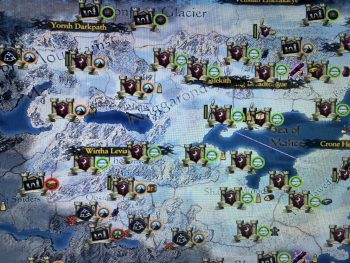 I came to Total War way back when, through TW: Rome. Arriving in 2004, it was the third game in the TW series, after Shogun, and Medieval. I liked it, though I wasn’t addicted – as I was to many games back then. But it was fun marshaling armies, and then marching them out to crush your enemies. I talked about it a little bit a few weeks ago in my RTS overview (man, Myth: The Fallen Lords was such a great game!).
I came to Total War way back when, through TW: Rome. Arriving in 2004, it was the third game in the TW series, after Shogun, and Medieval. I liked it, though I wasn’t addicted – as I was to many games back then. But it was fun marshaling armies, and then marching them out to crush your enemies. I talked about it a little bit a few weeks ago in my RTS overview (man, Myth: The Fallen Lords was such a great game!).
Sort of the “What is best in life?” response from the first Conan movie with Ah-nuld:
“To crush your enemies, see them driven before you, and to hear the lamentations of their women.”
There have been over a dozen incarnations, with the Egyptian-themed Pharaoh just dropping in 2023. What I’d LOOOOOVE, is for them to get the license from the Tolkien Estate and do TW: Middle Earth. I enjoyed Battle for Middle Earth I (never played II). But even a decently-done TW: Middle Earth would be FANTASTIC!!!!
Anywhoo. I’ve never done the Warhammer thing, but TW: Warhammer I came out in 2016. And TW: Warhammer II followed the next year. WH II has become the rabbit hole I periodically jump down. This game is — as my buddy Tony dubbed Diablo II long ago — electronic crack.
If you have WH I, you can use those factions/lords some in WH II. But you don’t need them at all. And while the base game is more than enough, part of the TW fun is buying the DLC – they add heroes, factions, and even a few campaigns. I don’t have WH III, but I the model is the same.
I have all the DLC for both WH I, and II. They are frequently 50% off+ on sale. Total War keeps ‘old’ product at original prices. It’s an annoying business model, and they do a boatload of DLC. But the base games have more than enough content. I just like the extra stuff to check out. And you don’t have to buy it, off course.
The Game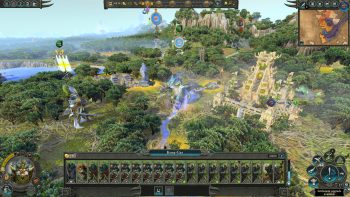 Some basics about Total War – at least, the Warhammer II version. The principles of the series are generally the same. You know what you’re getting, but the engine has evolved over the years. Warhammer II is pretty similar to I. I have not played III yet. I tried to go back to Rome Remastered earlier this year, and that old engine just didn’t work for me anymore.
Some basics about Total War – at least, the Warhammer II version. The principles of the series are generally the same. You know what you’re getting, but the engine has evolved over the years. Warhammer II is pretty similar to I. I have not played III yet. I tried to go back to Rome Remastered earlier this year, and that old engine just didn’t work for me anymore.
The general concept is you take charge of a faction (Elves, dwarves, vampire pirates, etc. In other games it’s Roman families, or medieval countries. You get it).
You build up settlements, and armies on a unit basis, for your faction. You can choose to fight the battles yourself (usually advantageous in outcome) or use auto-resolve. I find the battles time-consuming and not that much fun, so I auto-resolve. The benefits of auto-resolve seem to be reduced from winning the actual fights yourself, though.
Terrain matters in battles, and also on the global map. Dwarven settlements thrive in mountain regions. The vampire lords corrupt the land, making it less/unsuitable for some factions. The lizardmen are primarily in the jungles. So, the faction you choose often impacts what part of the world you start in, and where you choose to expand to.
You attack other armies, and settlements, or colonize ruined ones. You build them up, gaining advantages if you control all the settlements in a single province. You have to balance chasing quests, conquering settlements, and being strong enough on defense to protect what you already have. Random wandering warherds, or rogue armies (frigging pirates) can seriously blow up your plans.
You can form military alliances (as can your enemies), and when you’re strong enough, you can make a confederation with a same-race faction: absorbing all their assets – and their financial obligations!
I just keep playing and trying to expand without a debacle happening. The first ten to fifteen turns usually indicate whether I’m gonna be able to make a go of it with this faction.
Two Game OptionsThe base campaign is Battle for the Vortex. There are game-given quests, and faction quests as well. You try to build up your settlements and armies, eliminate enemies, and accomplish the various quests. I’ve never made it to the end game. Even on Easy, the computer AI is a pain in the ass. I’ve rarely made it past 100 turns before it got too messed up.
WH II also has a Mortal Empires option. It lets you pick any lord/faction from I or II, and compete against all the other factions. Last one standing wins: No over-arching campaign. I’ve played Mortal Empires a few times, and it’s a neat option, but I prefer playing the official campaign. So….
‘Guns or Butter’‘Guns or butter’ is an old economic model that shows how governments have to choose between spending for defense or domestic uses. TW play is a variation on that which is pretty much the over-arching element of the game.
You can primarily choose to spend gold on military units, or settlement buildings (there can be a couple other options, like temporary enhancements, but you’re mostly putting your gold into your settlements, or your armies).
And your armies (you start with one, but need multiple ones to survive) have upkeep costs. So, you have a one-time cost to add the unit, then an ongoing cost per turn, to keep it. The bigger your army, and the more advanced the units you use, the greater your upkeep. Which means less gold for your settlement buildings.
Each Province has a capital settlement, with five levels. And except for a couple exceptions, one to three minor settlements, with three levels. You build up your Province Capital, which opens up additional slots for new buildings. There can be a total of ten building slots in a Capital, and there are usually only three additional slots in a minor settlement.
Building Categories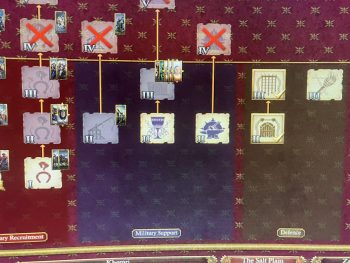 Choosing available options for a small settlement slot
Choosing available options for a small settlement slot
There are different types of ‘chains’ you can pick your settlement upgrades from. I really like this part of game management. And it’s essentially guns or butter. They have different classifications for different factions, but that’s just wording.
Resources – Available in certain settlements. They provide specific goods, like tradable resources (hides, marble, clay), plaques (related to some faction goals), or other benefits. Most settlements do not have this option, so I often take whatever it is. It’s nice when it’s a gold mine, as that is the best source of gold in the game.
Military Recruitment – These produce basic, and advanced, military units.
Basic buildings usually only have three levels, and you can start them when your Province Capital is only first level. They usually offer some other minor benefits, but this is where the meat shields and lower-level units come from. You build your starter armies here.
Advanced buildings usually go up to levels four or five, and provide elite units and enhancements. You need advanced units to get through the middle, and end, games. Purely gun stuff here.
Military Support – These buildings support your armies, lords (Each army is led by a lord), and heroes (a hero is a unique unit that can perform helpful actions and also provides benefits), and settlements. They might make recruitment costs less, reduce your casualty replenishment rates, or let you recruit infantry units with shields. More guns.
Defense – This a limited category, usually letting you add walls to your settlements, or some other defensive improvement for it. I always add walls to smaller settlements, but otherwise, this is my least-used category. As the title implies, this is a defensive category and kind of feels like a mix of guns and butter.
Infrastructure – Here you really get into the guns or butter dichotomy. There’s a wide range of options. Your main gold-making options are here. Also, you can focus on growth (how fast your settlements expand), and public order (if public order gets to-100, you have to put down a rebellion).
There are a lot of options here. Since you only get three additional slots in a smaller settlements, the choices are important. I do try to put up walls in small ones, so, with the Capital building, you only have two free slots. And you’re really choosing between guns and butter.
Misc. -Some settlements have Ports, and some have Landmarks. Ports generate gold and have their own chain. Landmarks are unique to a specific settlement and offer some benefit often worth taking. Even if it’s just a one-level use of a slot.
Choosing Your BuildingThe game randomly has factions declare war on you. And you can also end up at war with other factions through diplomacy options (that’s part of a follow-up post). You need to build up your first army in a hurry (you start the game with a lord and a small army of five-eight units, usually). Some faction is already pissed at you.
It’s tempting to use an early slot to pick a chain with a new military unit. You can get a more diverse, more effective, army, right out of the gate. Guns over butter.
But you gotta pay for all these troop units, and the constantly being constructed new buildings. So, taking that industrial building with a big per turn revenue, is tempting. The gold mine is a no brainer. In a small settlement (remember, only three slots in addition to the Capital), I almost always choose the max revenue building first. I need that stream started to build that first army.
The third (and last) slot usually goes to walls, which help with defense if you end up under siege. It’s the second slot that lets me shade towards guns or butter. For purposes of this discussion, growth and other things that primarily affect the settlement, or my revenue stream, are butter.
Since the capitals have eight to ten slots, and they go up to level five, I tend to use them for the advanced military buildings, to maximize my firepower. Some support, and non-military buildings go up to level five, so you have to factor that in as well. And walls never hurt.
TechnologiesFactions have unique Technology trees. Some are easier to develop than others. But they also reflect the guns or butter dilemma. Especially early on, you can choose technologies (which take multiple terms to develop) to enhance troop unit strength. And also to decrease recruiting costs.
Alternately, technologies that enhance your revenue stream can be vital in providing gold to maintain your growing army. Or building up your settlements.
And any time you can increase your growth or public order, you need to weigh those as immediate needs against those other areas. Butter.
Army Units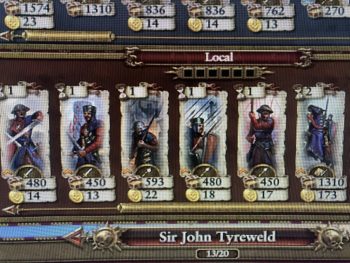 Basic units (like spearmen, or archers) cost a lot less to hire recruit and maintain, than ones such as knights, war eagles, or catapults. The stronger your army, the more it’s gonna cost you. And by mid-game, your main armies had better not still include a bunch of grunts; even if they have leveled up. You needs some higher power units.
Basic units (like spearmen, or archers) cost a lot less to hire recruit and maintain, than ones such as knights, war eagles, or catapults. The stronger your army, the more it’s gonna cost you. And by mid-game, your main armies had better not still include a bunch of grunts; even if they have leveled up. You needs some higher power units.
Armies are capped at a total of 20 units. Do you want a second full-size army? Or two medium-sized ones? Recruit a lord and build a 6 unit army to provide a military presence in a province with falling public order? All those units have an ongoing cost every turn…
You have multiple layers of guns or butter to decide upon. Bad things start to happen if your revenue stream goes negative. And enemies can raid your province, decreasing revenue. Or sack, burn to the ground, or even take over your settlements. And those things can hit your stream.
So, you need to have armies ready not only for attack, but defense. Again – that takes gold.
Wanna hire more lords or heroes? Cha-ching!
In the pic to the right, recruiting a knight will cost about three times as much as recruiting the spearman at arms next to him. But maintaining him each turn will cost ten times more.
So…Budgeting is the allocation of resources among multiple activities. Total War is strategic and tactical game of allocating resources. And basically, you decided whether to spend your gold on guns or butter. And you need the butter to make more gold. To pay for the guns.
I know folks who like playing out the battles. I have fought my share over the years, and I get it. But the faction management part of the game is what keeps me coming back. Guns or butter.
Crusader KingsA quick mention of another game.
For a kingdom management-and-war type of game, the Crusader Kings line (three so far) looks to be the standard. I have tried the first game a few times, and it’s got a MASSIVE learning curve. I think it’s manageable, I just haven’t been motivated to master the basics enough to continue on. But it does look like an awful lot of fun if you figure it out.
Next TimeThere will be a follow-up Total War post, in which I’m going to talk about how I recently had two of my most successful games by applying principles contained in George Washington’s Farewell Address. That was actually the original intent of this post, but I really enjoyed the guns or butter discussion.
Other Video Gaming Posts
RTS’ and Myth: Fallen Lords
Mount and Blade – Part One
Mount and Blade – Part Two
Steamed: What I’ve Been Playing (December, 2023)
Steamed: What I’ve Been Playing (October, 2022)
Fortnite (one of several mentions)

Bob Byrne’s ‘A (Black) Gat in the Hand’ made its Black Gate debut in 2018 and has returned every summer since.
His ‘The Public Life of Sherlock Holmes’ column ran every Monday morning at Black Gate from March, 2014 through March, 2017. And he irregularly posts on Rex Stout’s gargantuan detective in ‘Nero Wolfe’s Brownstone.’ He is a member of the Praed Street Irregulars, founded www.SolarPons.com (the only website dedicated to the ‘Sherlock Holmes of Praed Street’).
He organized Black Gate’s award-nominated ‘Discovering Robert E. Howard’ series, as well as the award-winning ‘Hither Came Conan’ series. Which is now part of THE Definitive guide to Conan. He also organized 2023’s ‘Talking Tolkien.’
He has contributed stories to The MX Book of New Sherlock Holmes Stories — Parts III, IV, V, VI, XXI, and XXXIII.
He has written introductions for Steeger Books, and appeared in several magazines, including Black Mask, Sherlock Holmes Mystery Magazine, The Strand Magazine, and Sherlock Magazine.
The Gorey Century
Yesterday was the 100th birthday of Edward Gorey, one of the most unique, unclassifiable artists that this country has ever produced. Though he died in 2000, he has a continuing cultural presence; he certainly lives on in my life and in the lives of a great many people.
Back in the incumbency of Jimmy Carter, when I was studying theater and living in the dorms of California State University Long Beach, one year I had a roommate named Scott. Scott didn’t fit into our tight-knit little community very well, and while I’ve always prided myself on my ability to get along with everyone, I didn’t get along very well with him. We had a bumpy year together, but I will always be glad that we were roommates, because Scott introduced me to the work of Edward Gorey, and that was a priceless gift that I can never repay him for.
Edward Gorey was a man of many talents — He did scenic and costume design for the stage, winning a Tony Award in 1978 for his costume designs for Dracula (his set design for that production was also nominated) and several of his stories are about ballet, which was one of his supreme passions. Additionally, he did highly individual book covers; for several years he did them for Anchor Paperbacks (including, among many others, editions of H.G. Wells’s The War of the Worlds, Franz Kafka’s Amerika, and T.S. Eliot’s Old Possum’s Book of Practical Cats), which are highly prized today simply for their Gorey covers. He also edited and illustrated a collection of classic ghost stories (1959’s Edward Gorey’s Haunted Looking-Glass) and did covers and illustrations for several of the supernatural mysteries of John Bellairs.
Beginning in the mid-1950’s, Gorey wrote and illustrated his own very short books, and these are the works that his fame mostly rests on. (Many were published under absurdly comical names that are anagrams of his own, like Ogdred Weary or Mrs. Regera Dowdy.) Visually, they are almost always set in the Victorian or Edwardian era (the closest to our own time that I can ever remember him coming was the 1920’s) and are full of bizarre, grotesque, violent, comic, cryptic, and occasionally supernatural incidents, often involving children; in fact, they are usually “children’s books” in form if not in content. The original small hardcover volumes are hard to come by and are pricey when you can find them, but there are four large omnibus volumes, each collecting a dozen or more of the short works — Amphigorey (1972), Amphigorey Too (1975), Amphigorey Also (1983), and Amphigorey Again (2006).
The first thing of Gorey’s that I ever read was “The Hapless Child”, which chronicles the travails of a lovely little girl named Charlotte Sophia. When the story begins, she’s safely ensconced in the bosom of her loving family (“Her parents were kind and well-to-do.”) Then her father, a military man, is reported killed in a native uprising and her grieving mother wastes away and dies, leaving the girl in the cold, utilitarian hands of the family lawyer, who loses no time in sending her to a boarding school where students and staff range from the merely unsympathetic to the positively sadistic. Things rapidly go from bad to worse, and from this point on, the hapless child is subjected to every horror that could befall a person in the most lurid melodrama, all rendered by Gorey in deadpan language and meticulous pen-and-ink images. Things don’t end well for the poor child, and the first time I read her tale, tears rolled down my face, but they weren’t tears of sadness; I was literally shaking with laughter. (Once the story almost got me thrown out of the college library where I was supposed to be working, when I showed it to a friend who was unacquainted with Gorey. We just couldn’t control ourselves.)
It does no good to try and explain to someone who is appalled by “The Hapless Child” rather than delighted by it that what’s being mocked is not the suffering of an innocent child (there was no Charlotte Sophia — Gorey made her up) but rather the reflexive, self-indulgent sentimentality of a hypocritical era and of readers still shackled to its sticky standards. (And one of the things that makes Gorey a complex artist is that he both recognizes the deficiencies of the Victorian age while at the same time clearly adoring many aspects of it.) Either Gorey lands with you or he doesn’t. For myself, there’s nothing that I like more than a good, Gorey story.
Other Gorey delights are “The Willowdale Handcar”, a series of strange, seemingly disjointed incidents that can, with a little imagination and a close examination of the illustrations, be connected into a coherent (if admittedly dark) narrative. (The story features The Black Doll, a sinister, featureless figure which haunts the edges of many of Gorey’s works.) Gorey could be genuinely frightening, as in “The Insect God”, in which huge insects kidnap children and mercilessly sacrifice them to their chitinous deity, and “The West Wing”, a succession of wordless images showing various rooms in a house that you definitely wouldn’t want to spend any time in. (Gorey could make a patch of peeling wallpaper radiate unease.)
Gorey would sometimes make mere objects his protagonists. In “The Inanimate Tragedy” Pins, Needles, a Glass Marble, a Four-Holed Button, and a Piece of Knotted String become embroiled in conflicts and misunderstandings that end in murder and suicide, if those terms are applicable to the fates suffered by a Half-Inch Thumbtack and a No. 37 Penpoint. Gorey would probably say that the word “tragedy” is no more out of place with junk-drawer contents than it is with the equally mundane and transient objects that we call human beings, and in “The Abandoned Sock” you feel genuine apprehension for the sock who foolishly deserts his mate on the clothesline to go adventuring and gets used for a dust rag, chewed by a dog, caught in a tree, and picked apart by birds to use for their nests until nothing is left of it. Does the sock’s life (which it found “tedious and unpleasant” when it was pinned on the line next to its dull mate) turn out all that differently from our own personal dramas?
One of Gorey’s most famous stories is “The Doubtful Guest”, which sees an odd, penguinish-looking creature attired in tennis shoes and a striped scarf turn up one night at the house of a settled, respectable (boring!) family and proceed to turn things upside down. Without ever uttering a sound, the uninvited visitor eats the plates at dinner, tears chapters out of books, suffers fits of bad temper during which it hides all the bath towels, safeguards objects that it takes a liking to (like expensive pocket watches) by dropping them in a pond, eerily sleepwalks up and down the hallways at night, and otherwise disrupts the placid routines of the baffled family, who have no hope of ever going back to life as it was, because “It came seventeen years ago — and to this day / It has shown no intention of going away.” (Many of Gorey’s stories are written in verse.) You understand the family’s frustration and despair, but you may also feel that a little unpredictability might do them some good. I have my own Doubtful Guest — a college friend of my wife made him for me, and I was delighted to learn that Gorey had several himself, that admirers had made and sent to him. (I have a Black Doll too, but that I had to buy.)
Gorey did several alphabet books; the most well-known (images from it have appeared on calendars, tee-shirts, coffee mugs etc.) is “The Ghastlycrumb Tinies.” Here dewy-eyed tots come to shocking and painful ends (“A is for Amy who fell down the stairs / B is for Basil assaulted by bears / C is for Clara who wasted away / D is for Desmond thrown out of a sleigh). Gorey doesn’t imply that these grim events are the children’s faults, but he doesn’t imply that they aren’t, either.
Gorey wasn’t uplifting or heartwarming, (except perhaps in “The Pious Infant”, the story of Henry Clump, a little boy who is too good to live long, and thank God he doesn’t) but now and then justice is served, as it is in “The Bug Book”, one of the few Gorey stories that’s not in black-and-white. In this tale of collective security and well-earned retribution, a peaceful group of bugs have their happy society wrecked by a new bug in the neighborhood, a big, brutish interloper who, despite their best efforts to be friendly and welcoming, “broke up their parties” and “waylaid them whenever they went visiting.” After a secret meeting in the dead of night, the problem is solved by squashing the obstreperous insect flat with a big rock. His remains are placed in an envelope addressed “To whom it may concern” and a pleasant and lively social life is resumed (in Gorey’s world, clearly the happiest of happy endings).
The great Literary critic Edmund Wilson (he who disparaged detective stories and sneered at Tolkien and Lovecraft) was an early admirer of Gorey; he found the artist’s singular little books pleasingly suggestive and allusive. “I find that I like to return to them,” Wilson said. The critic was wrong about a lot of things, but he was right about Edward Gorey. Over almost a half a century, I too have continued to come back to Gorey’s strange, sinister, darkly comic world. There is truly nowhere else like it.
Edward Gorey, this contradictory man who loved attending classical ballet (he was present for every performance of the New York City Ballet for twenty-five straight years) and watching “trash TV movies on the USA Network” was sui generis, the sort of one-of-a-kind genius who can only be appreciated and enjoyed, never imitated or emulated. The mark he set was too high for anyone else to reach… or maybe it would be more accurate to say that it wasn’t too high, exactly; rather, it was too far off to the side.
Whatever deserted house, sinister garden, enigmatic landscape or dimly-lit stage your eccentric spirit now haunts, Edward Gorey, happy birthday to you. Your ashes may have been scattered to the four winds, but your work goes marching on; I fully expect your macabre miniatures to be around for at least another hundred years.
Thomas Parker is a native Southern Californian and a lifelong science fiction, fantasy, and mystery fan. When not corrupting the next generation as a fourth grade teacher, he collects Roger Corman movies, Silver Age comic books, Ace doubles, and despairing looks from his wife. His last article for us was Reading for the End of the World Redux

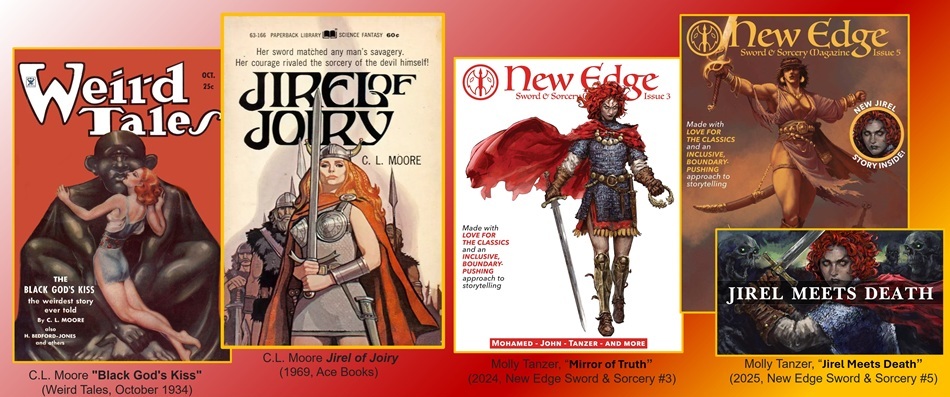
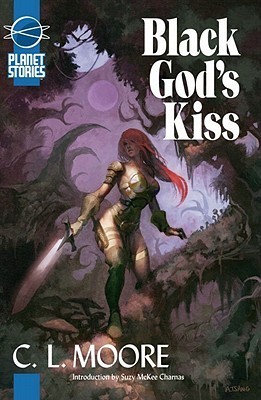


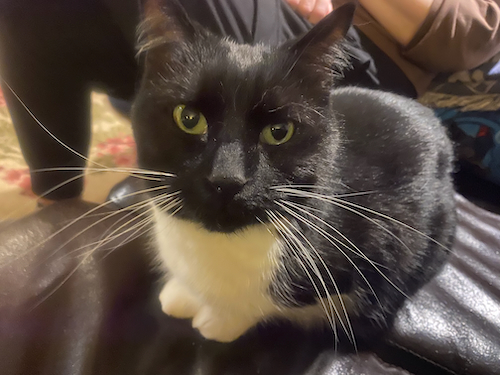
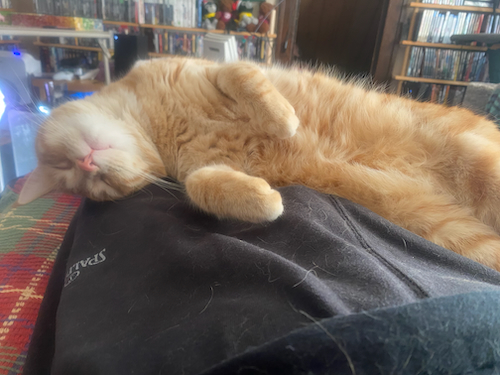
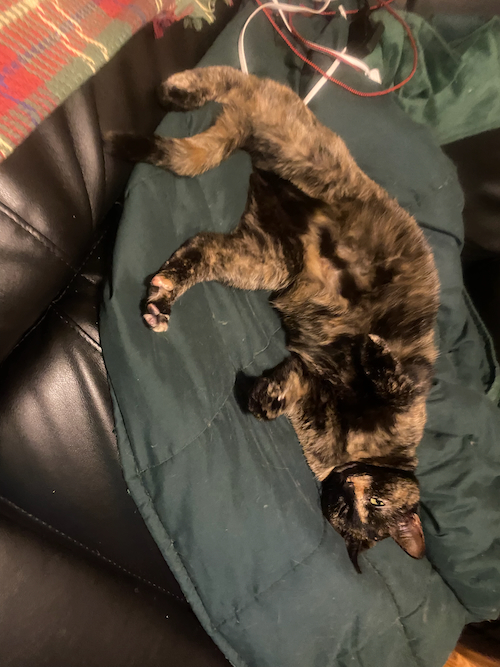
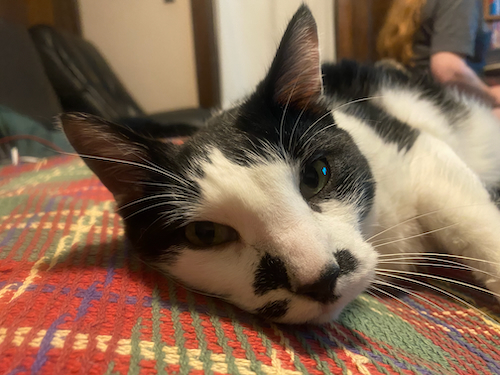

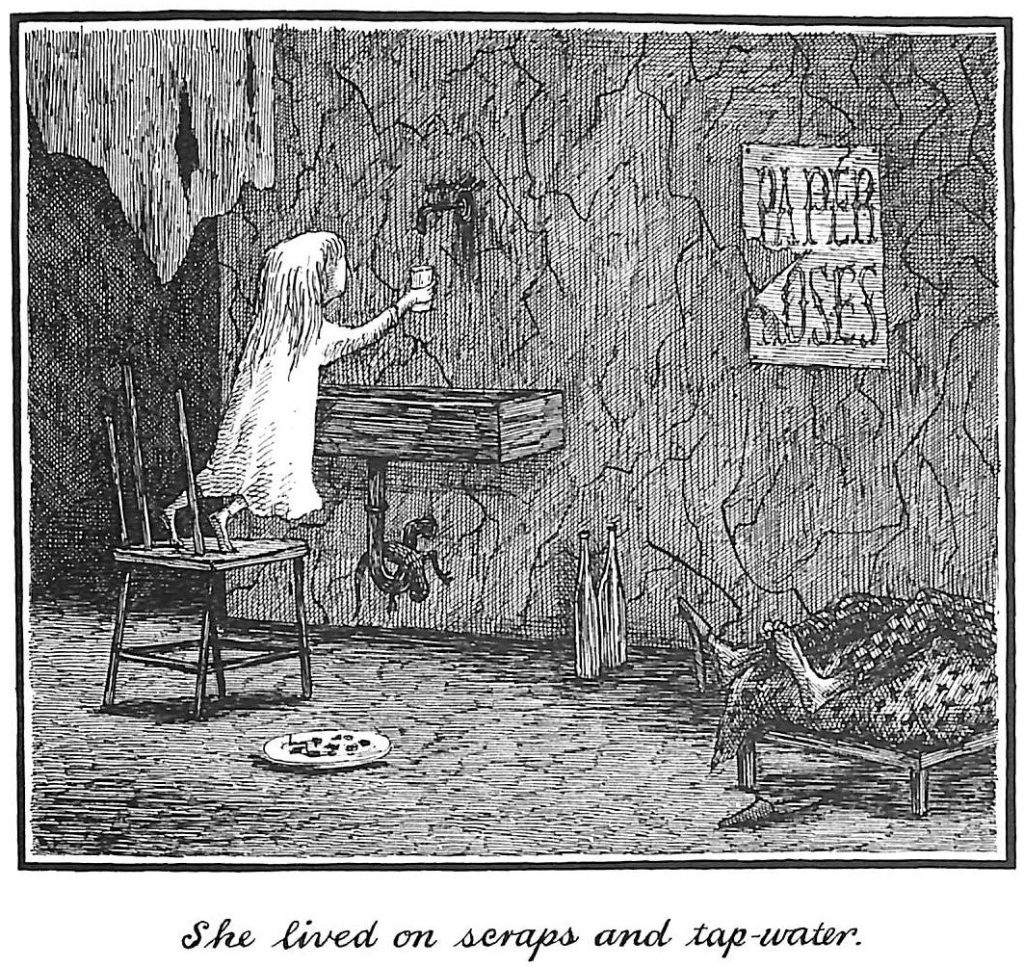
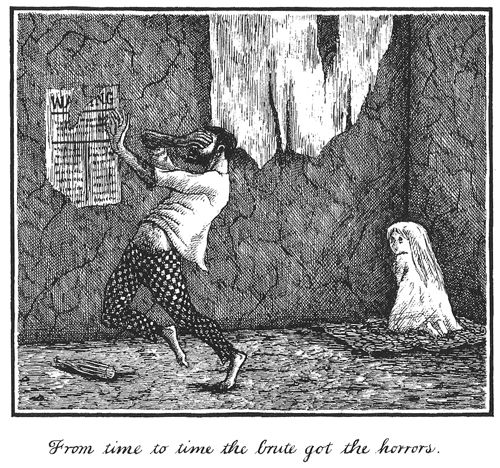
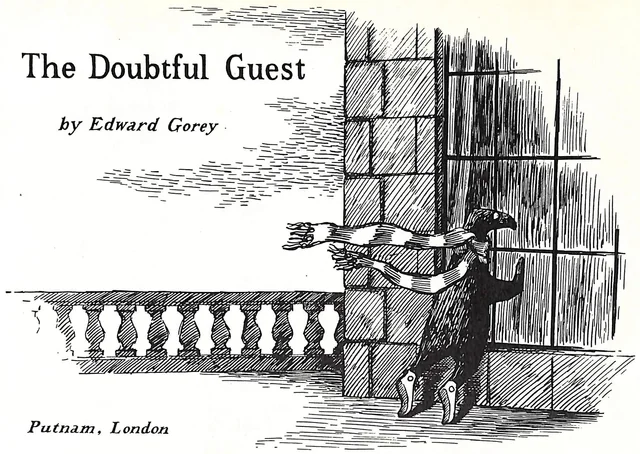
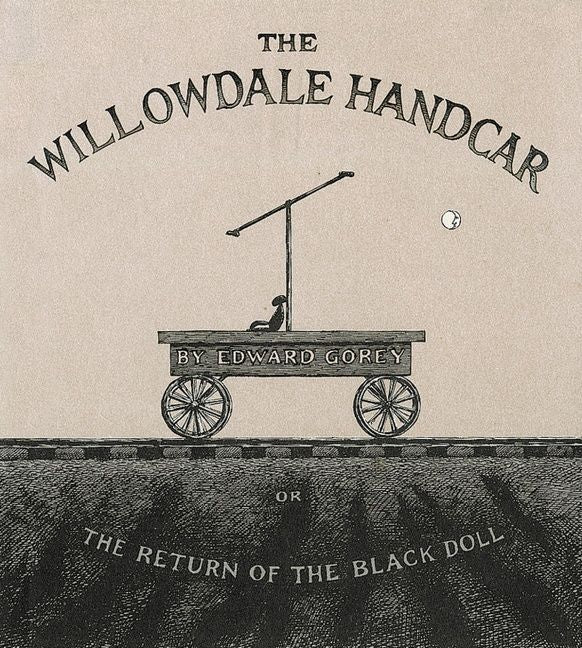
Recent comments